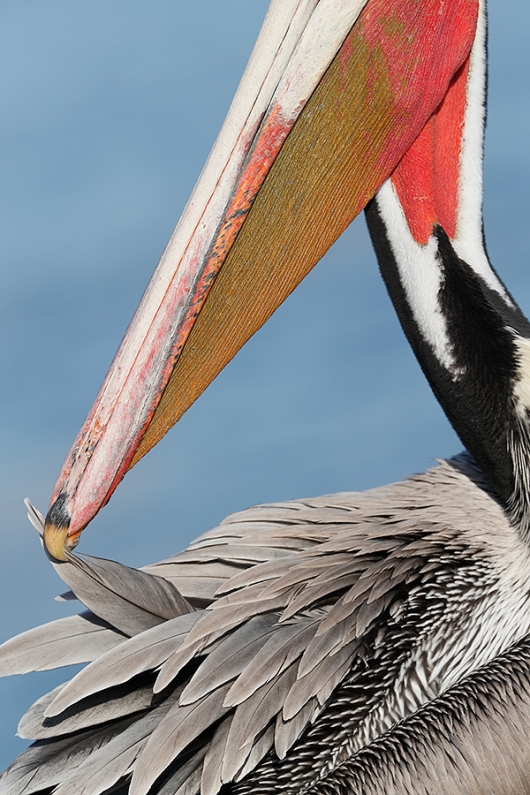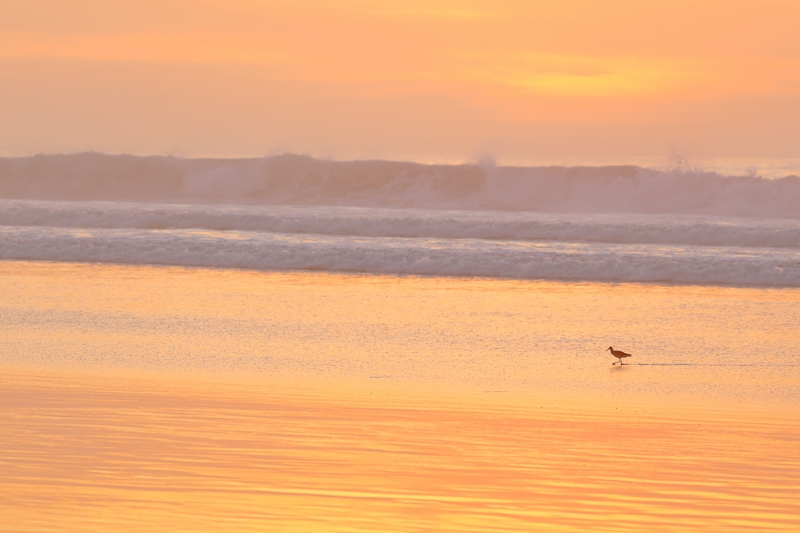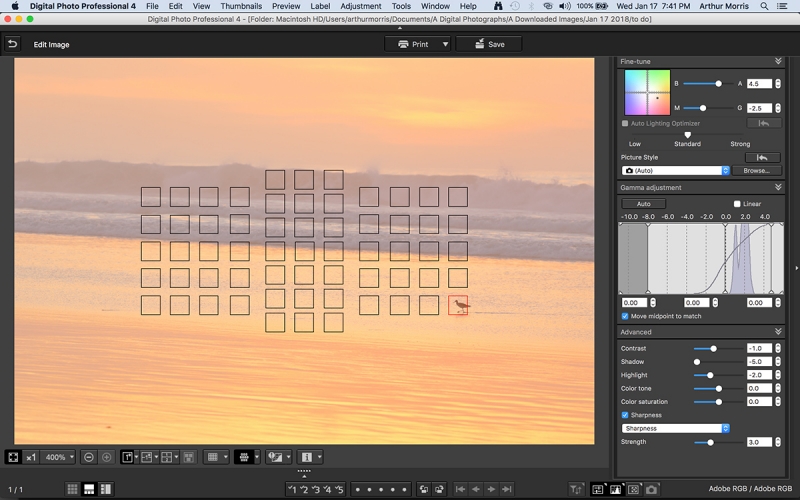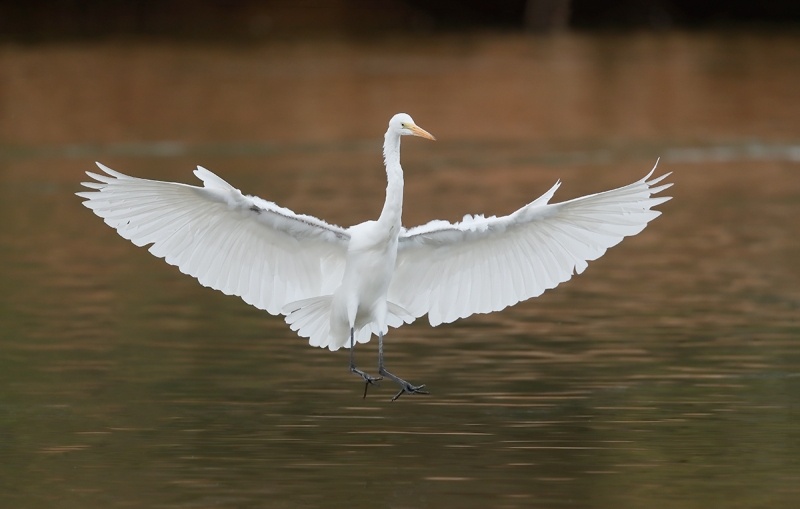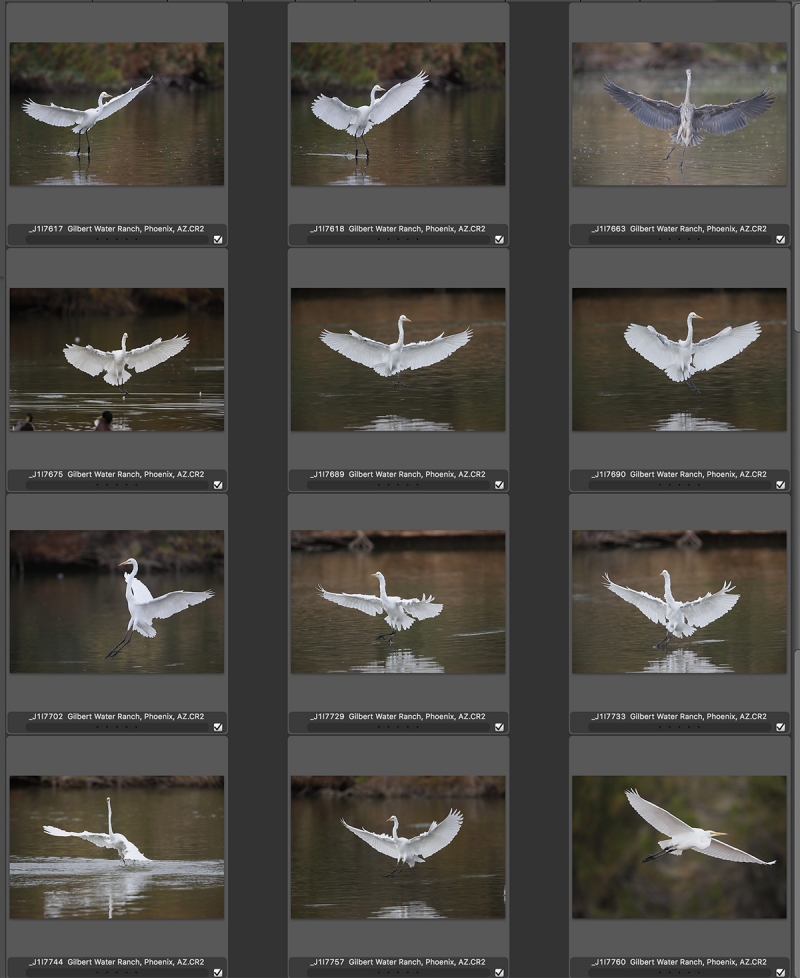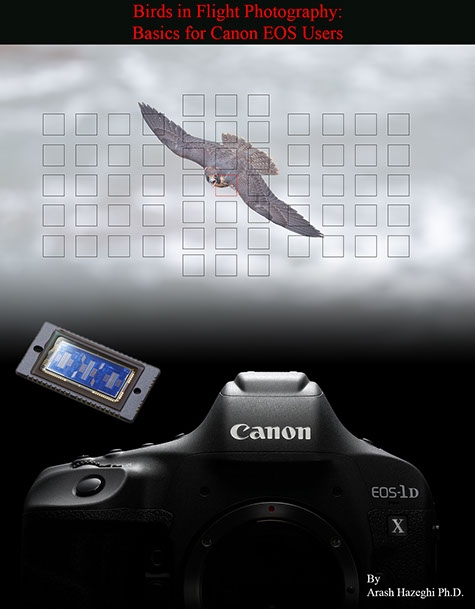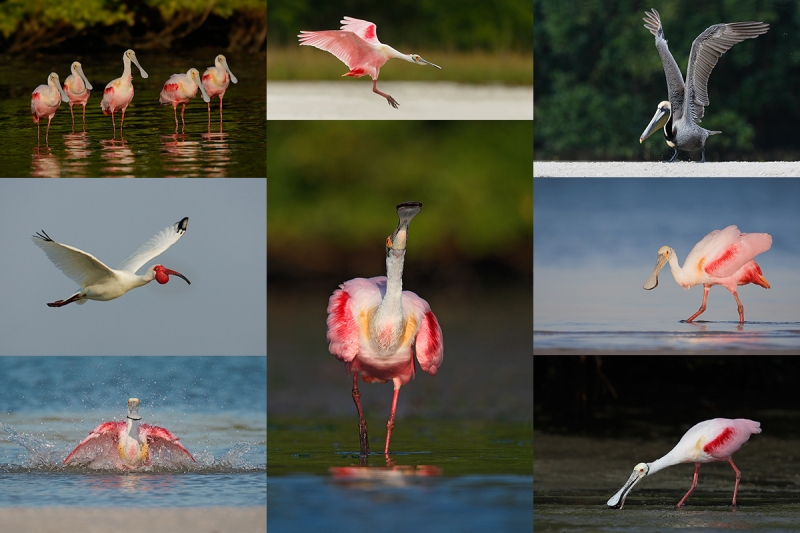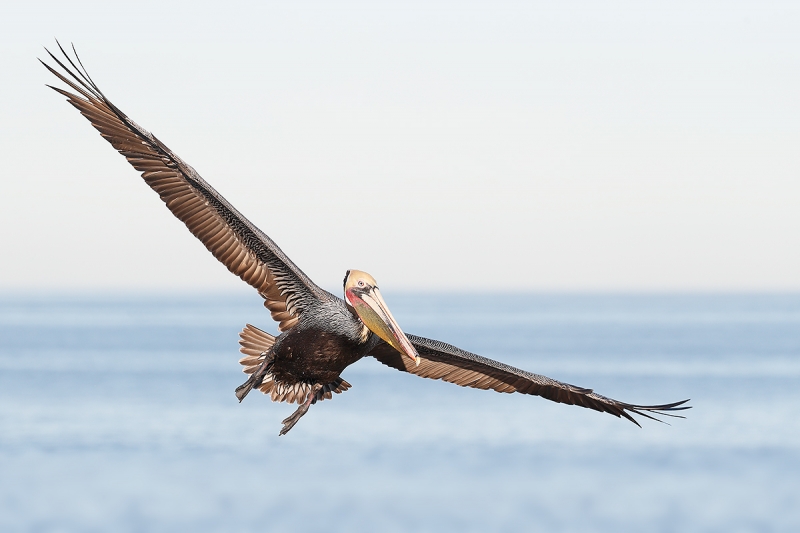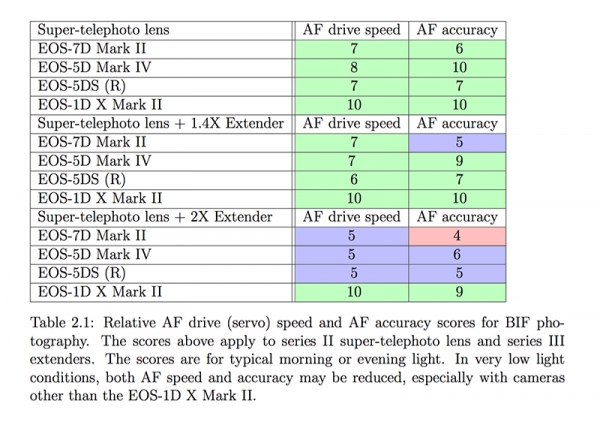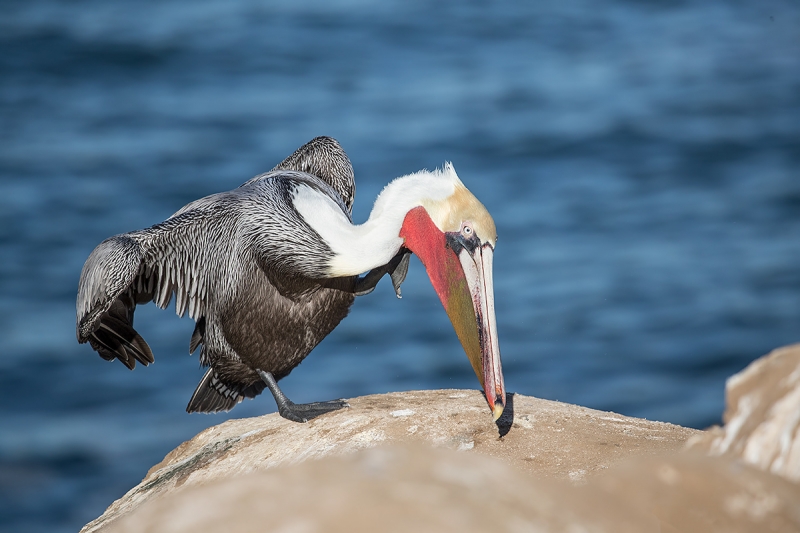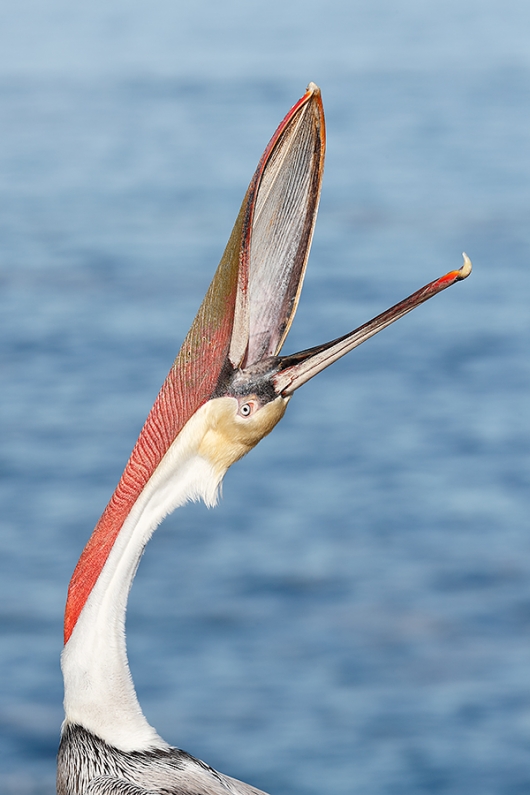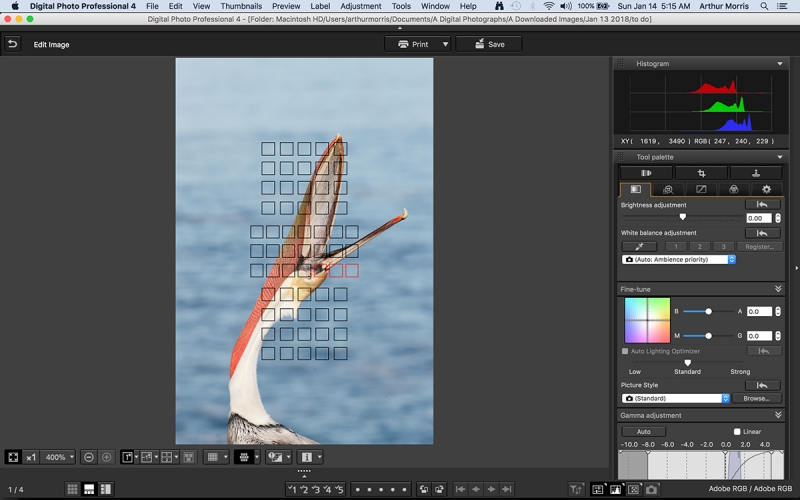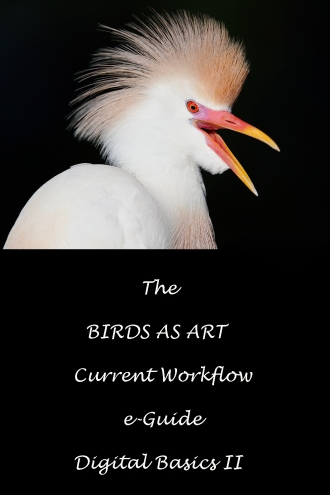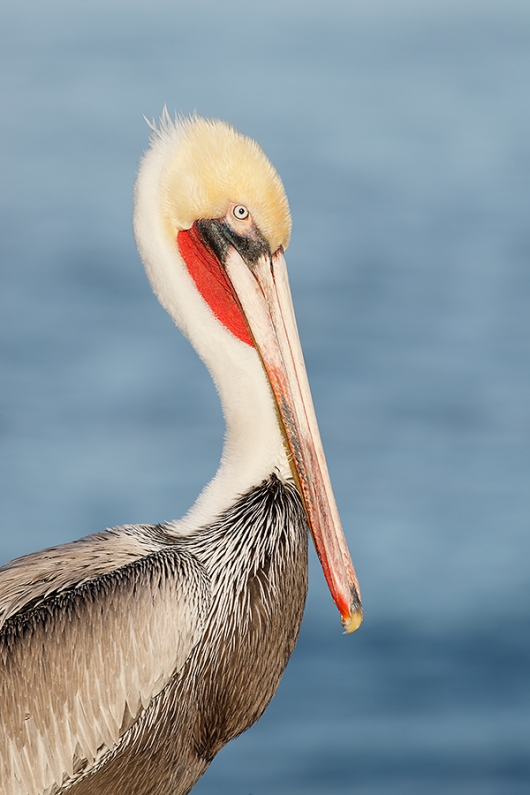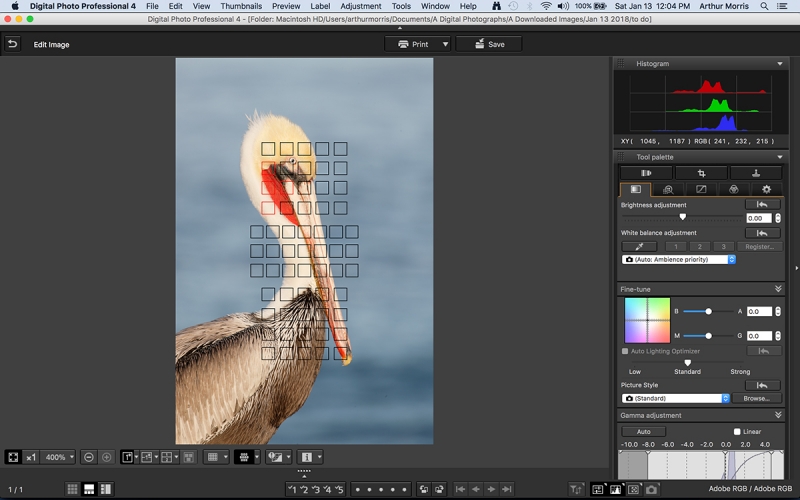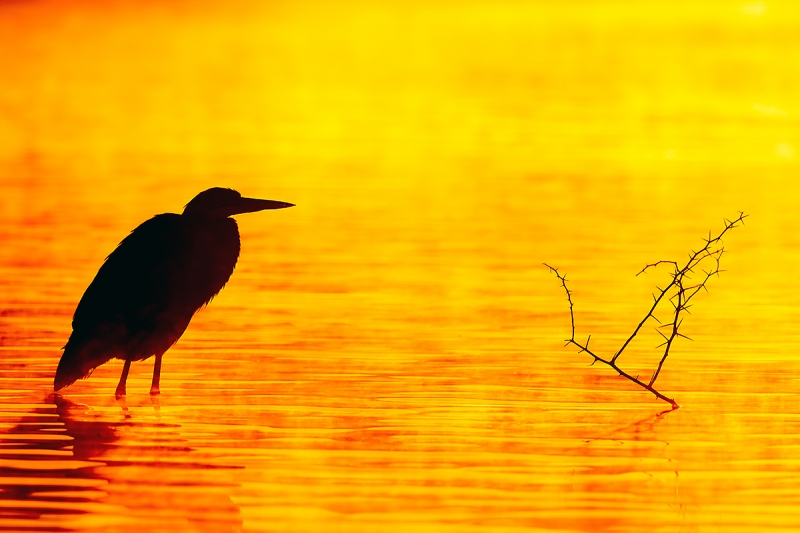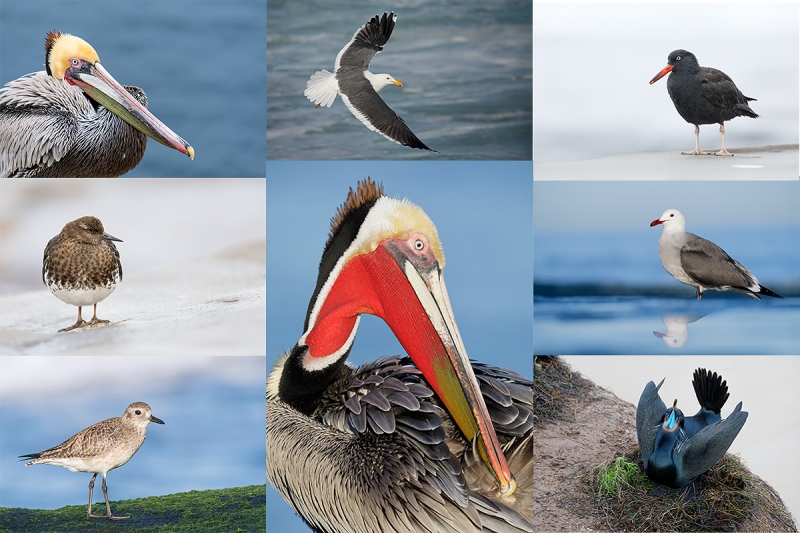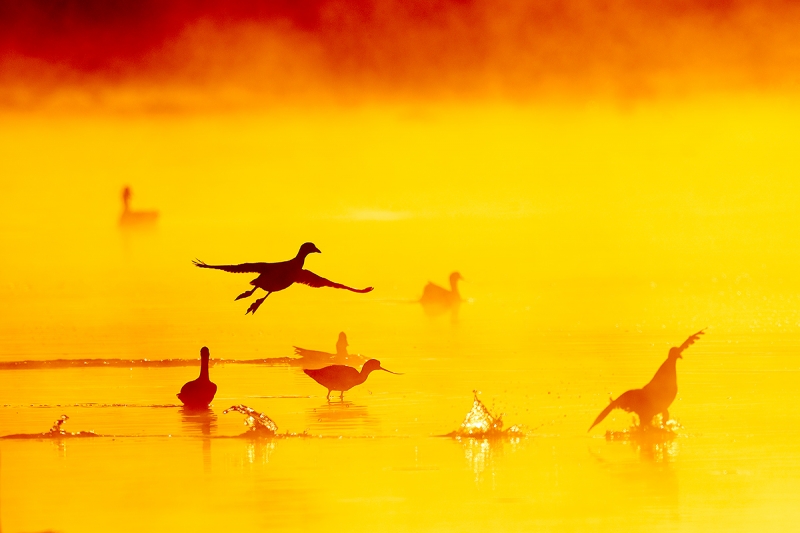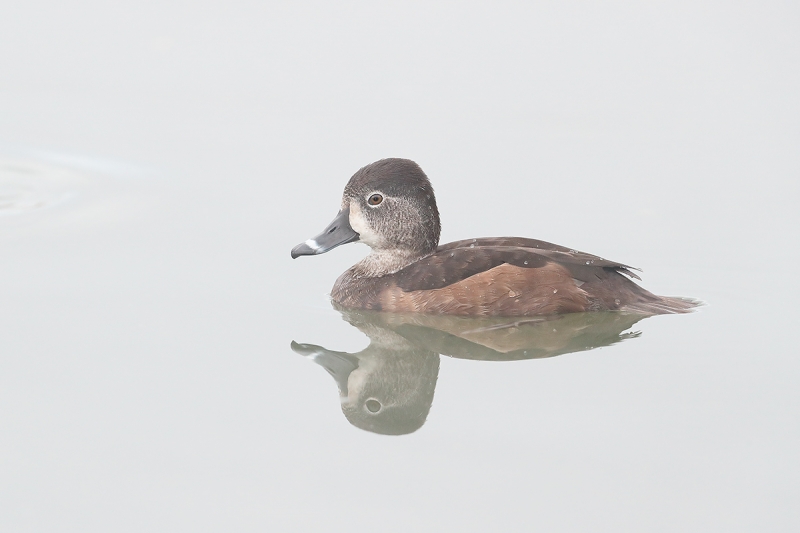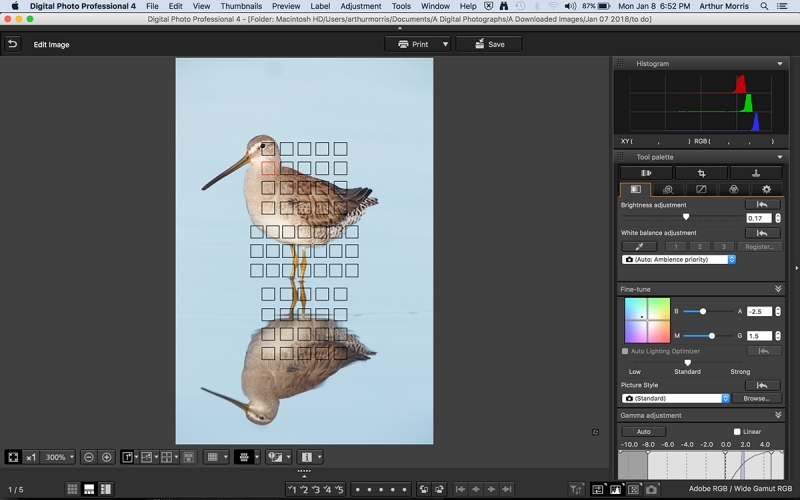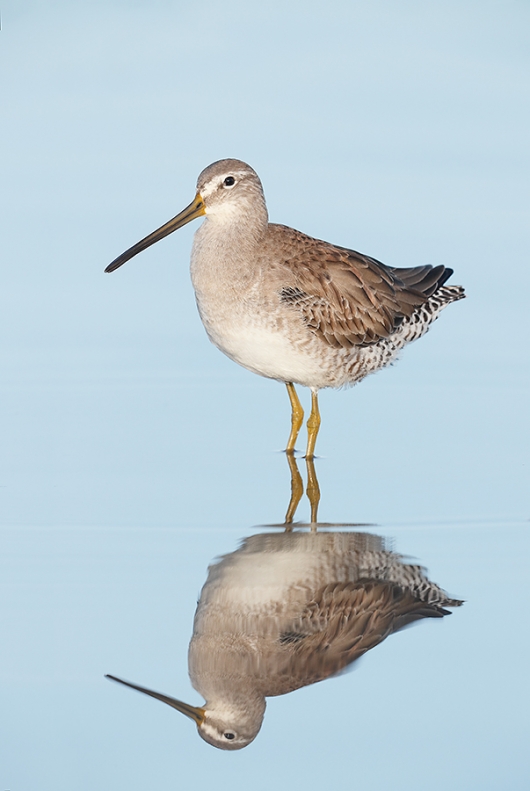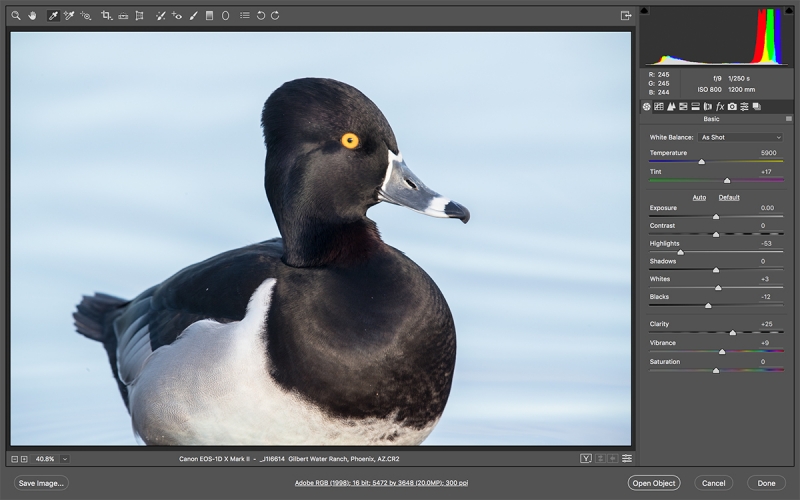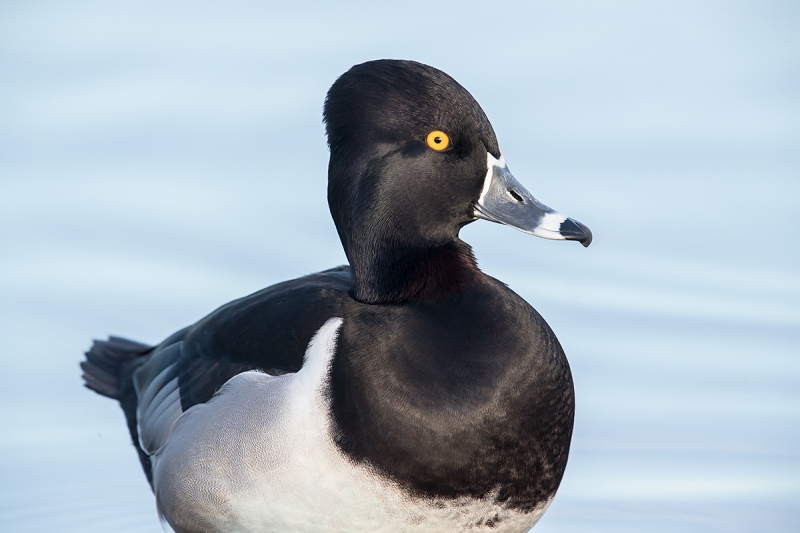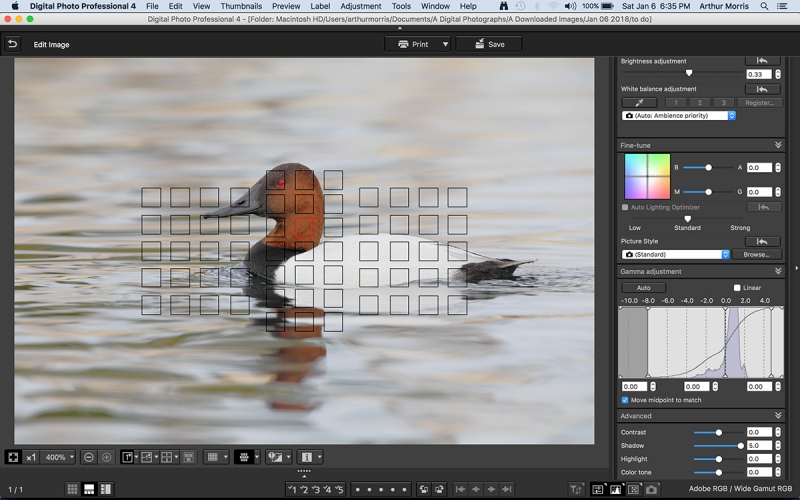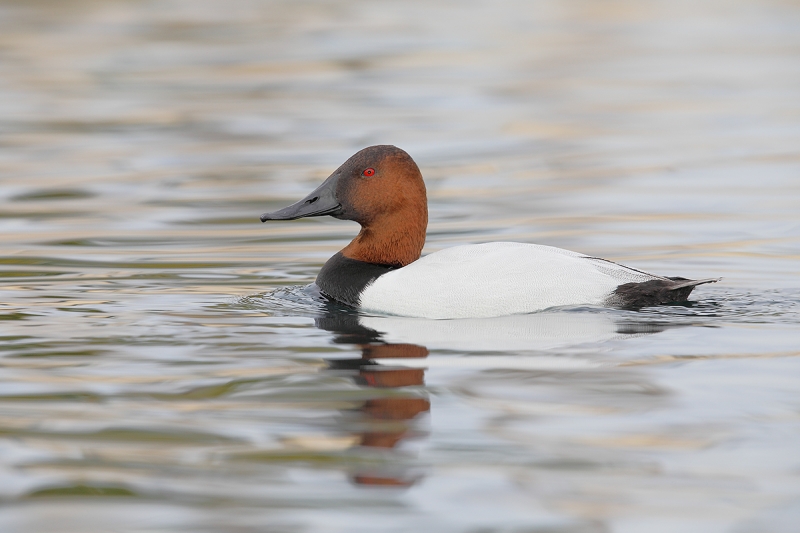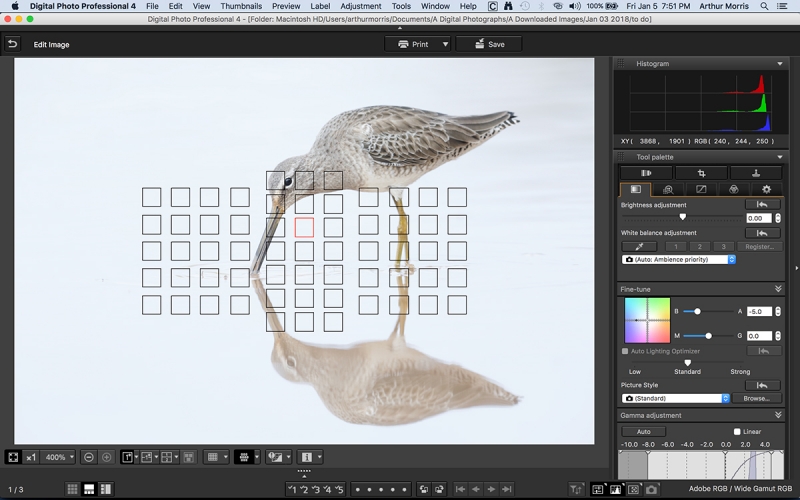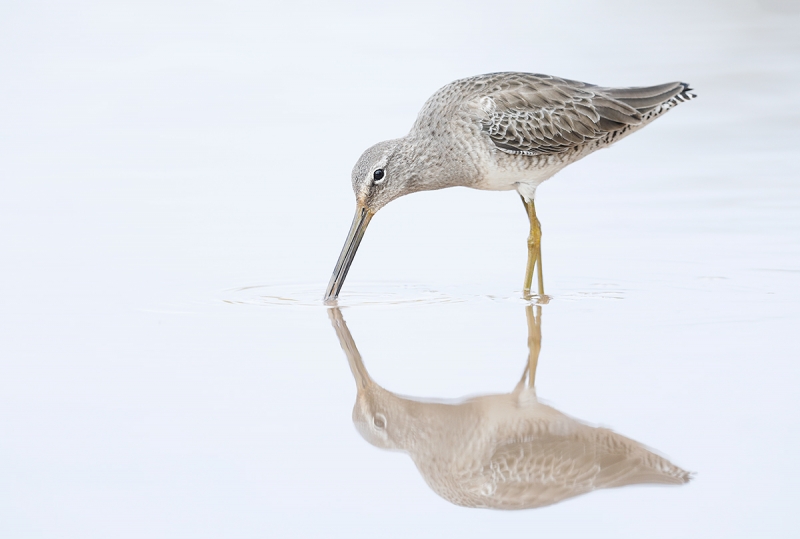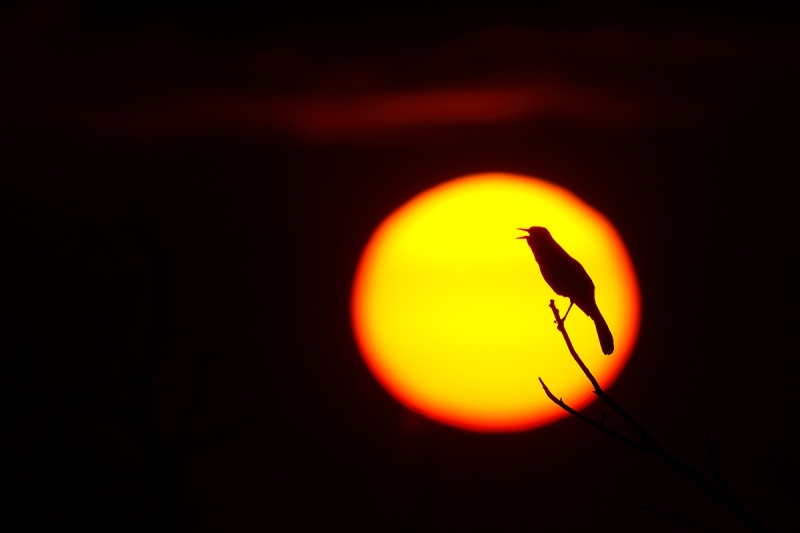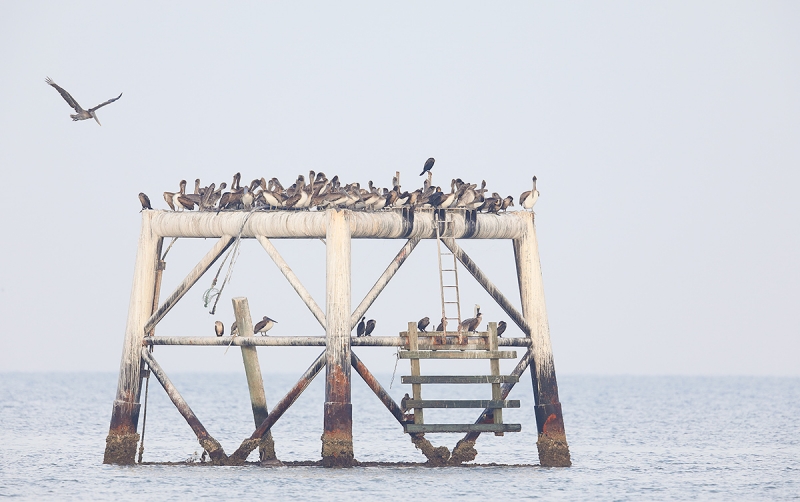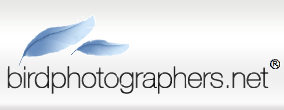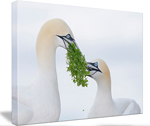January 19th, 2018 Nikon D5 Help Needed
If you live in San Diego and know your way around the Nikon system, more specifically, the Nikon D5, and would like to help me out, I would love to hear from you. I’d be glad to trade a morning of photo instruction in La Jolla for a morning of Nikon instruction. I have borrowed a D5 and the Nikkor 200-500 from B&H to test. I am ready to go but have no clue as to how to work the camera 🙂
If you are interested, please shoot me an e-mail and include a good phone number.
If you do not live in San Diego but think that you could help me via phone, please shoot me an e-mail and include a good phone number.
with love, arite
This Just In!
I just spent an hour on the phone and FaceTime with IPT veteran and blog regular Krishna Prasad Kotti. He kindly and generously helped me set up the new Nikon camera. When I first picked it up I felt hopelessly overwhelmed. Right now I am confident that I can head out tomorrow morning and start making great images with the new rig. Huge thanks Krishna!
January 19th, 2018 Stuff
We had our fourth great morning with the pelicans. We went back to Santee Lakes in the afternoon and it was worse than the first time we have gone when things were pretty bad compared to prior years …
The 2nd San Diego IPT #2 is now a sell-out and there are three slots left on the Spoonbill Boat IPT. The Master Classes will be announced soon.
The Streak
Today makes one hundred seventy-two days in a row with a new educational blog post! This one took about 90 minutes to prepare including the time spent optimizing the image. With all of my upcoming free time (or not …), the plan right now is to break the current record streak of 480 … Good health and good internet connections and my continuing insanity willing.


Booking.Com
Booking.Com came through for me twice again recently with both the DeSoto Fall IPT and next July’s UK Puffins, Gannets, and Bempton Pre-trip room reservations. And all the rates were great. If you’d like to give Booking.Com a shot, click here and you will earn a $25 reward. Thanks to the many who have already tried and used this great service.
Canon EOS 5D Mark IV (with extras)
BPN Avian Moderator Arash Hazeghi is offering a Canon 580EXII flash in excellent condition for $200. The sale includes the soft case, stand and manual, and insured Fed Ex groups shipping to continental US addresses only.
Please contact Arash via e-mail.
I own two of these and still use them on occasion. They are more intuitive than the newer 600 EX-RT. artie
Gear Questions and Advice
Too many folks attending BAA IPTs and dozens of folks whom I see in the field, and on BPN, are–out of ignorance–using the wrong gear especially when it comes to tripods and more especially, tripod heads… Please know that I am always glad to answer your gear questions via e-mail. Those questions might deal with systems, camera bodies, accessories, and/or lens choices and decisions.
|
|
|
This image was created on morning of Thursday, January 18 at La Jolla, CA with the hand held Canon EF 100-400mm f/4.5-5.6L IS II USM lens, the Canon Extender EF 1.4X III (at 420mm), and the blazingly fast Canon EOS-1D X Mark II. ISO 400. Evaluative metering +1/3 stop: 1/640 sec. at f/10 in Manual mode. AWB at 8:29am on a clear morning.
LensAlign/FocusTune micro-adjustment: +5.
Upper Large Zone/AI Servo/Shutter button AF as framed; the system performed perfectly by activating an array of five AF points on the left side of the bill half way down.
Brown Pelican, Pacific race in pre-breeding plumage, preening individual feather
|
Super-Tight
This gorgeous pelican was quite comfortable with our presence; there were at least five of us from the group photographing it from close range for close to an hour. I was the lowest and this enabled me to be the closest; others were standing and shooting over me. I created lots of head and bill vertical portraits with lovely Pacific-blue backgrounds. Then I decided to get even closer and try some abstract and quasi-abstract stuff. Why did I go super-tight? The bird had a chunk of feathers missing on one side of its forehead. Note that I went with just a bit of extra depth of field: f/10 instead of the wide open f/9. But at point-blank range, this did not make any real difference at all. Note als0 that I am zoomed out a bit here; from 560 to 420mm.
The JPEG here represents the full frame image capture.
Question #1
Does this image need to show the bird’s eye to be successful? Why or why not?
|
|
|
This image was created on late afternoon of Wednesday, January 17 at La Jolla Shores Beach, CA with the hand held Canon EF 100-400mm f/4.5-5.6L IS II USM lens (at 176mm) and my favorite bird-scape photography camera body, the Canon EOS 5D Mark IV. ISO 800. Evaluative metering +2 stops: 1/200 sec. at f/5.6 in Av mode. K7500 at 5:11pm with light clouds and fog on the horizon.
LensAlign/FocusTune micro-adjustment: extrapolated to -2.
Five AF points to the right of and two rows down from the center AF point/AI Servo/Surround/Shutter button AF as seen in the DPP 4 screen capture below.
Willet foraging in the surf at sunset
|
Willet Foraging in the Surf at Sunset
When we got to the beach it was 100% foggy. We played around with the gulls and made some nice images. Just as it seemed that the sun might break through two folks left. Those who stayed were rewarded with a pretty decent soft salmon-toned sunset.
Question #2
Which of the two images above do you like best? Why?
Question #3
How would you attempt to level this image?
DPP 4 Screen Capture
Question #4
What was I attempting to do by moving the Shadow slider to -5?
Question #5
Why should I have used Single Point/Manual Selection AF instead of AF (Expand) Surround?
The San Diego Site Guide
Whether you are visiting San Diego for photography for the first time or live in the area and have done the pelicans many dozens of times, you will learn a ton by studying the San Diego Site Guide. Why spend days stumbling around when you can know exactly where and when to be depending on the wind direction and sky conditions? In addition to the pelican primer, there is great info on the best beaches for the gorgeous gulls, on Marbled Godwit, on the lower cliffs, Lesser Scaup, and Wood and Ring-necked Ducks as well.
Learn more or purchase your copy here.
Help Support the Blog
Please help support my (stupendous) efforts here on the blog by remembering to click on the logo link above each time that you shop Amazon. That would be greatly appreciated. There is no problem using your Prime account; just click on the link and log into your Prime account. With love, artie
If In Doubt …
If in doubt about using the BAA B&H affiliate link correctly, you can always start your search by clicking here. Please note that the tracking is invisible. Web orders only. Please, however, remember to shoot me your receipt via e-mail.




Please Remember to use my Affiliate Links and to Visit the New BAA Online Store 🙂
To show your appreciation for my continuing efforts here, we ask, as always, that you get in the habit of using my B&H affiliate links on the right side of the blog for all of your photo and electronics purchases. Please check the availability of all photographic accessories in the New BIRDS AS ART Online Store, especially the Mongoose M3.6 tripod head, Wimberley lens plates, Delkin flash cards and accessories, and LensCoat stuff.
As always, we sell only what I have used, have tested, and can depend on. We will not sell you junk. We know what you need to make creating great images easy and fun. And please remember that I am always glad to answer your gear questions via e-mail.
I would of course appreciate your using our B&H affiliate links for all of your major gear, video, and electronic purchases. For the photographic stuff mentioned in the paragraph above, and for everything else in the new store, we, meaning BAA, would of course greatly appreciate your business. Here is a huge thank you to the many who have been using our links on a regular basis and those who will be visiting the New BIRDS AS ART Online Store as well.
Facebook
Be sure to like and follow BAA on Facebook by clicking on the logo link upper right. Tanks a stack.
Typos
In all blog posts and Bulletins, feel free to e-mail or to leave a comment regarding any typos or errors. Just be right :).
January 18th, 2018 Stuff
On Day Three, the first San Diego IPT group had fog in the morning and fog in the afternoon. Both sessions turned out to be fantastic, especially for those who stuck it out in the afternoon when things were not looking too good … With the high tide and big surf, the morning session featured a zillion flying pelicans.
I was glad to learn on Wednesday that Karen Jordan sold her Canon EOS 7D Mark II digital camera body in near mint condition for $949 and her Canon EF 100-400 f/4.5-5.6L IS Zoom Lens (the original 1-4) in excellent plus condition for the BAA record low price of $528 within days of their being listed in mid-January. Scroll down to see what she had to say about the experience of selling her used gear on the BAA Used Photo Gear page.
The 2nd San Diego IPT #2 is now a sell-out and there are only two slots left on the Spoonbill Boat IPT. The Master Classes will be announced soon.
The Streak
Today makes one hundred seventy-one days in a row with a new educational blog post! This one took about 90 minutes to prepare including the time spent optimizing the image. With all of my upcoming free time (or not …), the plan right now is to break the current record streak of 480 … Good health and good internet connections and my continuing insanity willing.


Booking.Com
Booking.Com came through for me twice again recently with both the DeSoto Fall IPT and next July’s UK Puffins, Gannets, and Bempton Pre-trip room reservations. And all the rates were great. If you’d like to give Booking.Com a shot, click here and you will earn a $25 reward. Thanks to the many who have already tried and used this great service.
Gear Questions and Advice
Too many folks attending BAA IPTs and dozens of folks whom I see in the field, and on BPN, are–out of ignorance–using the wrong gear especially when it comes to tripods and more especially, tripod heads… Please know that I am always glad to answer your gear questions via e-mail. Those questions might deal with systems, camera bodies, accessories, and/or lens choices and decisions.
Selling Your Used Photo Gear Through BIRDS AS ART
Selling your used (or like-new) photo gear through the BAA Blog is a great idea. We charge only a 5% commission. One of the more popular used gear for sale sites charged a minimum of 20%. Plus assorted fees! Yikes. They went out of business. And e-Bay fees are now up to 13%. The minimum item price here is $500 (or less for a $25 fee). If you are interested please scroll down here or shoot us an e-mail with the words Items for Sale Info Request cut and pasted into the Subject line :). Stuff that is priced fairly — I offer pricing advice to those who agree to the terms — usually sells in no time flat. Over the past year, we have sold many dozens of items. Do know that prices on some items like the EOS-1D Mark IV, the old Canon 100-400, the old 500mm, the EOS-7D and 7D Mark II and the original 400mm DO lens have been dropping steadily. You can always see the current listings by clicking on the Used Photo Gear tab on the orange-yellow menu bar near the top of each blog post page.
Recent Used Gear Kudos
From Karen Jordan via e-mail
I just received full priced payment for both the 7dII and the 100-400L and shipped them both off to their respective new owners this afternoon. What a painless, pleasant and fast way to sell!!! Karen
List of recent Used Gear Page Sales
Sales of cameras and lenses have been through the roof recently with stuff selling at prices that thill the buyers and please the sellers.
Karen Jordan sold her Canon EOS 7D Mark II digital camera body in near mint condition for $949 and her Canon EF 100-400 f/4.5-5.6L IS Zoom Lens (the original 1-4) in excellent plus condition for the BAA record low price of $528 within days of listing in mid-January.
Walt Anderson sold his Canon EF 70-200mm f/2.8L IS II USM lens in like-new condition for the BAA record low price of $1299.00 and his new in the box Nikon SB-5000 AF Speedlight in new condition for $499.00, both in early January.
Rowland Jackson sold his Canon EF 500mm f/4L IS USM super telephoto Lens (the “old five”) in near-mint condition for a fabulously low $3799 in early January.
Walt Anderson sold his Canon EF 11-24mm f/4L USM lens in like-new condition for $1799.00 just day after it was listed in late December.
Hisham A. sold a Canon EOS 5D Mark III in very good condition for the BAA record low price of $999 in mid January.
Hisham A. sold his Canon 70-200mm f/2.8L IS II USM lens very good condition (with perfect glass and in perfect working order) for the BAA record low price of $999 and a Canon EF 400mm f/5.6 L USM lens in very good condition (with perfect glass and in perfect working order) for the BAA record low by far price of $549in early January.
Hisham A. sold a Canon Extender EF 1.4X III (teleconverter) in like-new good condition for $329 and the original Canon 24-105mm f/4L IS USM lens in like-new condition for $449 in late December.
BAA friend Jim Roetzel sold his Xtrahand Vest, green — size XL — for $275 in December.
Mike Rust sold his Canon 600mm f/4L IS II ISM lens in near-mint condition for $9396.00 and his Canon EF 24-105mm f/4L IS II USM lens in like-new condition for $699.00. Both on the first day of listing.
Mike Rust also sold his Canon EOS-1DX Mark II like-new condition for a BAA record-low, shock-the-world price of $3997.00, his Canon 400mm f/4 IS II DO USM lens in like-new condition for the amazing low price of $5999.00, his Canon EF 11-24mm f/4L USM Lens in like-new condition for $1799.00, a 1.4X III and two 2X III TCs, all in like-new condition for $329 each, and a Wimberley V2 Tripod Head in excellent condition with extras for $399.
IPT veteran Carolyn Peterson sold her Canon EOS 5D Mark III camera body in excellent condition for $1399 in mid-December.
Pradip Thachile sold his Canon EF 400mm f/4 IS DO lens (the original version) in excellent condition for the BAA record low price of $2097.00 in late December.
Joel Williams sold his Fujifilm XF 100-400mm f/4.5-5.6 R LM OIS WR lens in like-new condition for $1199 right after it was listed in mid-December.
Mike Newman sold his Canon EF 100mm f2.8/L IS USM macro lens in like-new condition for only $599 in mid-December, right after it was listed.
Joel Williams sold a Fujifilm XF 1.4x TC WR teleconverter in like-new condition for $299 in mid-December, 2017.
New Listings
Canon EF 400mm f/4 IS II DO USM Lens
BPN Avian Moderator Arash Hazeghi is offering a Canon 400mm f/4 IS II DO USM lens in like-new condition but for a few tiny scratches on the lens foot the amazing low price of $5899.00. The sale includes a Lens Coat, the the lens trunk, the lens strap, the padded fabric front lens cover, the rear lens cap, the original box and everything that came in it, and insured ground shipping via major courier to US addresses only. Your item will not ship until your check clears unless other arrangements are made.
Please contact Arash via e-mail.
I own the 400 DO II and find a way to take it on most trips. I take it to Scotland and Nickerson Beach and San Diego. It has served as my big gun in the Galapagos and on Southern Ocean (the Falklands and South Georgia) trips. It is a killer for flight with or without the 1.4X III TC. I used it most recently in San Diego for the ducks and the White Pelicans with both the 1.4X and the 2X III TCs. And I am planning on using it as my big gun and ship photography lens on next October’s hoped for Emperor Penguin chicks trip … No guarantees there. And really skilled folks have had amazing success hand holding it for flight and for action. With this lens in high demand and new ones selling for $6899, Arash’s lens is a great buy that will save you a smooth a grand!. artie
Canon EOS 5D Mark IV (with extras)
Sold in one day!
BPN Avian Moderator Arash Hazeghi is also offering a Canon EOS 5D Mark IV in mint condition for $2499. The sale includes the original product box and everything that came in it including the front lens cap and the strap along with an extra Canon LPE6N battery, an extra 3rd party battery, a 64GB SanDisk Extreme Pro CF card, and insured Fed Ex groups shipping to continental US addresses only.
Please contact Arash via e-mail.
What can I say. The 5D IV is my favorite ever digital dSLR. I own and use three of them. If you have been dreaming of a 5D IV, grab Ivan’s camera body right now and save a cool $800. artie
Canon EF 500mm f/4L IS USM Lens (the “old five”) with extras!
Greg Morris is offering a Canon EF 500mm f/4L IS USM lens in very good plus condition for $3700. The lens was cleaned and checked by Canon in December 2017 and the lens mount was replaced. The sale includes a Canon Extender EF 1.4X II, a Canon Extender EF 2X II (both in like new condition with caps and pouches), the rear lens cap, the lens trunk, the leather front lens cover, and insured ground shipping via major courier to US addresses only.
Your item will not ship until your check clears unless other arrangements are made.
Please contact Greg via or e-mail by phone at 1-580-678-5929 (Central time).
The 500mm f/4 lenses have been the world’s most popular telephoto lenses for birds, nature, wildlife, and sports for many decades. I owned and used and loved my “old five” for many years. If you don’t have the cash for the 500 II and can handle the additional 1 1/2 pounds, then this is your best super-telephoto option. Most everyone can produce sharp images with this lens and a 1.4X TC. Folks with good to excellent sharpness techniques can do the same with a 2X TC. With the new 500 II selling for $8,999 you can save a neat $5299.00 by grabbing Greg’s lens (plus the two TCs!) artie
ps: The Series II TCs work perfectly well with the older super telephoto lenses; the series III TCs are best when working with the newer Series II lenses.
Canon Canon EOS 7D Mark II
BAA Record-low Price
Martin Mikulas is offering a Canon EOS 7D Mark II in like-new condition for the BAA record-low price of $799. The shutter count is under 15,000. The sale includes the front lens cap, the strap, the battery, the original box and everything that came in it, and insured ground shipping to US addresses via major courier to US addresses only.
Please contact Martin via e-mail or by phone at 1-757-356-1529 (Eastern time.)
Both Patrick Sparkman and I used and loved the 7D Mark II until about two years ago when we both committed to using full frame Canon bodies. We both made some truly great images with it. Two of my three 2016 Nature’s Best honored entries were created with the 7D II, one still, and one video. One thing is for sure: the 7D Mark II is the greatest value ever in a digital camera body. With a new one going for $1499 you can save a cool $700 by grabbing Martin’s lens. artie
Featured Item
Canon EF 600mm f/4L IS II USM Lens
BAA Record-Low, Shock-the-world priced
Walt Anderson is offering a barely used EF 600mm f/4L IS II USM lens in mint to like-new condition with extras for the BAA record low price of $9395.00. The sale includes the LensCoat that has protected his 600 since day one, a RRS stuff foot (installed), the original foot, the lens trunk, the original box and everything that came in it: front cover, rear cap, manuals, & the rest, and insured ground shipping via major courier to US addresses only. Your item will not ship until your personal of certified check clears unless other arrangements are made.
Please contact Walt via e-mail or by phone at 1-847-721-8319 (Central time).
WMD: Weapon of Mass Destruction!
Walt, a long time BAA friend and an IPT veteran as well, is the inventor of the Better Beamer Flash Extender, the very first BAA mail order item. When it comes to taking care of his gear, Walt is fastidious.
The 600 II is the state of the art super-telephoto for birds, nature, wildlife, and sports. If I can get it to a location, it is my go-to weapon. It is fast and sharp and deadly alone or with either TC. With a new one going for $11,499, you can save a cool $2,005.00 by grabbing Walt’s might-as-well-be-new lens right now. artie
ps: I used my 600 II to create today’s featured image.
Great Egret Landing
As I mentioned previously on the blog and above, on January 8, 2017 I came across a half-filled lake at Gilbert that hosted about 20 Great Egrets. They were fishing and catching. With my 1DX II set up as detailed in Arash Hazeghi’s Birds in Flight Photography Guide; Basics for Canon EOS Users –2017, I was excited to come across such an excellent opportunity to test both my skills and the new settings. The results — at least for me — were astounding. See more keepers below.
The next day the pond was filled to over-flowing with nary a bird in sight … Gilbert can be a tough place to photograph as the water levels often change dramatically from day to day.
Your Thoughts?
Please leave a comment and let us know your thoughts on this image, the good and the bad.
|
|
|
These images was created at the Gilbert Water Ranch in Phoenix, AZ on morning of Thursday, January 18. I used the Induro GIT304L Grand Series 3 Stealth Carbon Fiber Tripod/Mongoose M3.6-mounted Canon EF 600mm f/4L IS II USM lens, the Canon Extender EF 1.4X III, and the blazingly fast Canon EOS-1D X Mark II. ISO 1600. Evaluative metering + 2 1/3 stops off the gray sky: 1/2000 sec. at at f/5.6. AWB on an overcast morning. The shutter speed for the GBH flight image was 1/1600 sec. it should have been 1/1250 sec.
LensAlign/FocusTune micro-adjustment: -3.
All AI Servo/Shutter button AF as originally framed. The additional AF info is classified. Click here to see the last version of the Rear Focus Tutorial. Click on the image to see the spectacular larger version.
My Dozen Favorite Keepers from that Morning
|
My Dozen Favorite Keepers from that Morning
All of the images in the composite above are razor sharp on the eye …
Birds in Flight Photography: Basics for Canon EOS Users/2017 edition: $55.00
If Arash’s guide helped me a ton, imagine what it could do for you. You can learn more or order your copy here. Please note that this guide will not be updated for future Canon bodies.
Arash Hazeghi
Arash Hazeghi, Ph.D. is an electron device engineer. He received his MS.c. and Ph.D. degrees in Electrical Engineering in 2006 and 2011, from Stanford University, Stanford, California. His pioneering research on Carbon Nanotubes and quantum capacitance have been cited many times. He is currently focused on the development of cutting edge non-volatile memory technologies such as the ones used in imaging cards for DSLR cameras.
In his free time, Arash enjoys photographing avian species in their natural habitat and in flight: these are very challenging subjects. He has been working on hand held super-telephoto technique to capture dynamic, highly-detailed in-flight images of many different avian species. His birds in flight images, featured numerous times on the web, in printed media, as well as in prestigious museums and art galleries have inspired many photographers. Arash’s work was recently on display at the San Diego Natural History Museum for a period of 8 months. His work has also been featured many times in the annual publications of NANPA (North American Nature Photographer’s Association).
He is an Moderator in the Avian Forum on BirdPhotographers.Net and a premier photographer at 500px.com. He is the co-author of the Canon DPP 4 Raw Conversion Guide and the Post Processing Guide with Arthur Morris, which detail RAW conversion and post processing techniques for both professional and the enthusiast photographers. This guide is a result of extensive field experience in making in-flight images with various Canon equipment. The author wishes that every photographer finds this guide useful and effective in improving the quality of their photos.
I will add that Arash’s images of birds in flight amaze many. I will be sharing some of them here soon. For faster results, go to BPN and do a search for his name and follow his started threads … artie
The San Diego Site Guide
Whether you are visiting San Diego for photography for the first time or live in the area and have done the pelicans many dozens of times, you will learn a ton by studying the San Diego Site Guide. Why spend days stumbling around when you can know exactly where and when to be depending on the wind direction and sky conditions? In addition to the pelican primer, there is great info on the best beaches for the gorgeous gulls, on Marbled Godwit, on the lower cliffs, Lesser Scaup, and Wood and Ring-necked Ducks as well.
Learn more or purchase your copy here.
Help Support the Blog
Please help support my (stupendous) efforts here on the blog by remembering to click on the logo link above each time that you shop Amazon. That would be greatly appreciated. There is no problem using your Prime account; just click on the link and log into your Prime account. With love, artie
If In Doubt …
If in doubt about using the BAA B&H affiliate link correctly, you can always start your search by clicking here. Please note that the tracking is invisible. Web orders only. Please, however, remember to shoot me your receipt via e-mail.




Please Remember to use my Affiliate Links and to Visit the New BAA Online Store 🙂
To show your appreciation for my continuing efforts here, we ask, as always, that you get in the habit of using my B&H affiliate links on the right side of the blog for all of your photo and electronics purchases. Please check the availability of all photographic accessories in the New BIRDS AS ART Online Store, especially the Mongoose M3.6 tripod head, Wimberley lens plates, Delkin flash cards and accessories, and LensCoat stuff.
As always, we sell only what I have used, have tested, and can depend on. We will not sell you junk. We know what you need to make creating great images easy and fun. And please remember that I am always glad to answer your gear questions via e-mail.
I would of course appreciate your using our B&H affiliate links for all of your major gear, video, and electronic purchases. For the photographic stuff mentioned in the paragraph above, and for everything else in the new store, we, meaning BAA, would of course greatly appreciate your business. Here is a huge thank you to the many who have been using our links on a regular basis and those who will be visiting the New BIRDS AS ART Online Store as well.
Facebook
Be sure to like and follow BAA on Facebook by clicking on the logo link upper right. Tanks a stack.
Typos
In all blog posts and Bulletins, feel free to e-mail or to leave a comment regarding any typos or errors. Just be right :).
January 17th, 2018
|
|
All images on this card were created by Arthur Morris on the Hooptie Deux at Alafia Banks
|
2018 Spoonbill Boat 1 1/2 DAY IPT: $1199.00. Limit: 6 photographers/Openings 3.
2018 Spoonbill Boat 2 1/2 DAY IPT: $1999.00. Limit: 6 photographers/Openings 2.
FEB 19 & 20: one full day with morning and afternoon photo sessions via customized pontoon boat. FEB 20, morning photo session.
FEB 23 & 24: two full days with morning and afternoon photo sessions via customized pontoon boat. FEB 25, morning photo session.
We will be leaving the dock very early for the morning sessions (weather permitting) in hopes of photographing the pre-dawn White Ibis blast-offs. The morning sessions are planned for the Alafia Banks Roseate Spoonbill Rookery. We have several options for the afternoons including returning to Alafia. There will be lots of opportunities for flight photography of several species including and especially Roseate Spoonbill. Also likely for flight photography are nesting Brown Pelican, Great Blue Heron, and Double Crested Cormorant, many carrying nesting material. This IPT includes all boat and guide fees, in the field instruction, chest waders (feel free to bring your own of course to assure a perfect fit), and two working lunches on Friday and Saturday. For the most part we will be standing in mid calf to knee high water behind our tripods. We help you get in and out of the boat with your gear. This is likely not the best trip for folks with mobility or balance problems. Note however that some folks may opt to stay on the boat to photograph. They usually have lots of chances for flight photography of spoonbills and other species but are almost always pretty far away from the spoonbills that land.
I recently saw a similar trip advertised two months too late for breeding plumage spoonbills. The Hooptie IPT represents an incredible opportunity and with 3 slots filled already the remaining three spots should be filled very quickly. I do hope that you can join us. There will be a meet and greet at 7:00pm sharp on the evening of Thursday, FEB 22. All of the images on the card were made on the Hooptie Duex during the last two weeks of February, prime time for the spoonies in mega-breeding plumage. Many folks have written expressing interest so please do not tarry.
You may hold your spot with an e-mail request; the next two are in. Then you may either secure your spot by calling Jim or Jennifer at the office at 863-692-0906 and leaving the $400 deposit on credit card or sending your check for payment in full to us as follows with the check made out to:
BIRDS AS ART
Please send it via US mail here:
BIRDS AS ART
PO BOX 7245
Indian Lake Estates, FL 33855
If you call to leave your deposit you will be asked to mail your check for the balance asap.
|
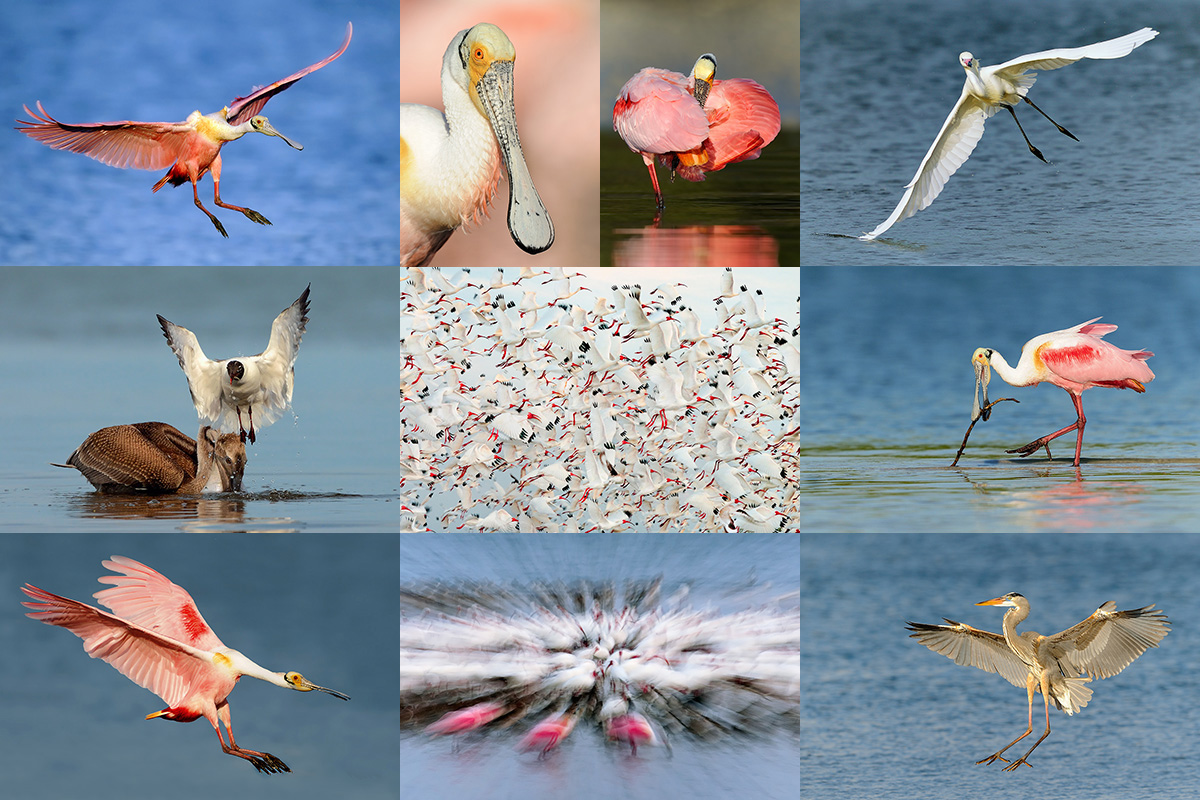
|
|
Images courtesy of our guide; copyright 2017 Captain James Shadle (aka Froggie). All of the images here were created at Alafia Banks. Card creation and design by Arthur Morris/BIRDS AS ART.
|
Roseate Spoonbill is one of if not the most sought after avian photographic subjects in Florida. They are generally hard to find and somewhat difficult to approach. They are relatively easy to find at Alafia Banks—heck, you can’t miss seeing them, but even there they can on some days be somewhat difficult to approach. On some days we may be able to get ridiculously close to them. The huge incentive to get out to Alafia Banks in mid-February is the chance to photograph this species at the height of its spectacular breeding plumage…. with long telephoto lenses. A 500 or 600 with a 1.4X TC is perfect for flight.
As above, there will — weather permitting — three boat trips — 2 mornings and 1 afternoon — on the first IPT –, five boat trips: 3 mornings and 2 afternoons on the second. Mornings to Alafia Banks for spoonbills and Brown Pelicans (with lots of flight photography often with the birds likely carrying nesting material), Double-crested Cormorants, ibises (both Glossy and White) in breeding plumage. Many of the White Ibises will be sporting their spectacular, distended, red, naked (un-feathered) throat pouches—typically larger in the females. In addition we will get to photograph egrets including Great and Reddish, both in full breeding plumage, shorebirds, and more. There will be lots of flight photography opportunities. Afternoon trips either to Alafia Banks for spoonbills and more or to a more sheltered inland rookery location for a variety of nesting birds. In the event of horrific weather artie will either take the group to Fort DeSoto or will conduct an image review/Photoshop session. This IPT includes lunches on the full day with small group image sharing and review and some over-the-shoulder Photoshop instruction.
January 17th, 2018 Stuff
The first San Diego IPT group enjoyed a second sensational morning with the pelicans on the cliffs of La Jolla. Isolating single birds was much more difficult than it was yesterday as there were about five times as many birds. But that made for better flight photography. After seeing some of my super-tight images at lunch several in the group vowed to go to longer effective focal lengths on Wednesday. 🙂
There is only one slot left on the San Diego IPT #2 …
The Streak
Today makes one hundred seventy days in a row with a new educational blog post! This one took about 90 minutes to prepare including the time spent optimizing the image. With all of my upcoming free time (or not …), the plan right now is to break the current record streak of 480 … Good health and good internet connections and my continuing insanity willing.


Booking.Com
Booking.Com came through for me twice again recently with both the DeSoto Fall IPT and next July’s UK Puffins, Gannets, and Bempton Pre-trip room reservations. And all the rates were great. If you’d like to give Booking.Com a shot, click here and you will earn a $25 reward. Thanks to the many who have already tried and used this great service.
Gear Questions and Advice
Too many folks attending BAA IPTs and dozens of folks whom I see in the field, and on BPN, are–out of ignorance–using the wrong gear especially when it comes to tripods and more especially, tripod heads… Please know that I am always glad to answer your gear questions via e-mail. Those questions might deal with systems, camera bodies, accessories, and/or lens choices and decisions.
More on my 1DX II
I may have jumped to conclusions when I stated that my brand new (replaced by Canon) 1DX II showed the first oil spatter after 18 frames … It seems that there is not an oil spatter problem with the new body. That said my original 1DX II was a dust magnet and so is my replacement. I cleaned the sensor of the replacement body with the big blower brush and got rid of all the dust spots but two. And heck, they might have been new ones …
There is, however, no denying the killer accurate AF. And the blazingly fast frame rate is addictive … But the 5D Mark IV image files are clearly superior. Lots more on the 1DX II soon.
|
|
|
This image was created on Day one of the first San Diego IPT — the morning of Monday, January 15 at La Jolla, CA. I used the hand held Canon EF 100-400mm f/4.5-5.6L IS II USM lens (at 200mm) and the blazingly fast Canon EOS-1D X Mark II. ISO 800. Evaluative metering + 1 stop off the sky: 1/2000 sec. at f/5.6 in Manual mode. AWB at 7:53am on a clear morning.
LensAlign/FocusTune micro-adjustment: extrapolated to -2.
One AF point up from the center AF point/AI Servo/Shutter button AF as originally framed. The AF Area selection mode for this image is classified. The selected AF point was on the rear crown as originally framed.
Brown Pelican, Pacific race in pre-breeding plumage in flight
|
When in Rome, Do As Arash Does (if you wanna be a good flight photographer …)
I am on a two part mission to become a better flight photographer. Part two will shock a lot of folks. Part one began when Arash Hazeghi kindly sent me a copy of his Birds in Flight Photography: Basics for Canon EOS Users/2017 edition. I had pretty much quit using my 1dX Mark II when I came across this chart in Arash’s e-Guide:
|
|
AF Comparison Chart for Four Canon Camera Bodies with Series II Super-telephotos with and without Series III Teleconverters
|
Inspired by Arash …
At that point, I was inspired to go back to my 1DX II for flight and action. As it turned out, the replacement body (as noted above) does not at present (after 2812 frames) seem to have oil spatter problems. How did I set up my 1DX II for flight photography? The way that Arash suggests in his guide. The biggest change for me was his preferred AF Area Selection mode. I have been doing things his way for more than two weeks now and have been consistently making some of the best flight images in my career …
Birds in Flight Photography: Basics for Canon EOS Users/2017 edition: $55.00
If Arash’s guide helped me a ton, imagine what it could do for you. You can learn more or order your copy here. Please note that this guide will not be updated for future Canon bodies.
Arash Hazeghi
Arash Hazeghi, Ph.D. is an electron device engineer. He received his MS.c. and Ph.D. degrees in Electrical Engineering in 2006 and 2011, from Stanford University, Stanford, California. His pioneering research on Carbon Nanotubes and quantum capacitance have been cited many times. He is currently focused on the development of cutting edge non-volatile memory technologies such as the ones used in imaging cards for DSLR cameras.
In his free time, Arash enjoys photographing avian species in their natural habitat and in flight: these are very challenging subjects. He has been working on hand held super-telephoto technique to capture dynamic, highly-detailed in-flight images of many different avian species. His birds in flight images, featured numerous times on the web, in printed media, as well as in prestigious museums and art galleries have inspired many photographers. Arash’s work was recently on display at the San Diego Natural History Museum for a period of 8 months. His work has also been featured many times in the annual publications of NANPA (North American Nature Photographer’s Association).
He is an Moderator in the Avian Forum on BirdPhotographers.Net and a premier photographer at 500px.com. He is the co-author of the Canon DPP 4 Raw Conversion Guide and the Post Processing Guide with Arthur Morris, which detail RAW conversion and post processing techniques for both professional and the enthusiast photographers. This guide is a result of extensive field experience in making in-flight images with various Canon equipment. The author wishes that every photographer finds this guide useful and effective in improving the quality of their photos.
I will add that Arash’s images of birds in flight amaze many. I will be sharing some of them here soon. For faster results, go to BPN and do a search for his name and follow his started threads … artie
The San Diego Site Guide
Whether you are visiting San Diego for photography for the first time or live in the area and have done the pelicans many dozens of times, you will learn a ton by studying the San Diego Site Guide. Why spend days stumbling around when you can know exactly where and when to be depending on the wind direction and sky conditions? In addition to the pelican primer, there is great info on the best beaches for the gorgeous gulls, on Marbled Godwit, on the lower cliffs, Lesser Scaup, and Wood and Ring-necked Ducks as well.
Learn more or purchase your copy here.
Help Support the Blog
Please help support my (stupendous) efforts here on the blog by remembering to click on the logo link above each time that you shop Amazon. That would be greatly appreciated. There is no problem using your Prime account; just click on the link and log into your Prime account. With love, artie
If In Doubt …
If in doubt about using the BAA B&H affiliate link correctly, you can always start your search by clicking here. Please note that the tracking is invisible. Web orders only. Please, however, remember to shoot me your receipt via e-mail.




Please Remember to use my Affiliate Links and to Visit the New BAA Online Store 🙂
To show your appreciation for my continuing efforts here, we ask, as always, that you get in the habit of using my B&H affiliate links on the right side of the blog for all of your photo and electronics purchases. Please check the availability of all photographic accessories in the New BIRDS AS ART Online Store, especially the Mongoose M3.6 tripod head, Wimberley lens plates, Delkin flash cards and accessories, and LensCoat stuff.
As always, we sell only what I have used, have tested, and can depend on. We will not sell you junk. We know what you need to make creating great images easy and fun. And please remember that I am always glad to answer your gear questions via e-mail.
I would of course appreciate your using our B&H affiliate links for all of your major gear, video, and electronic purchases. For the photographic stuff mentioned in the paragraph above, and for everything else in the new store, we, meaning BAA, would of course greatly appreciate your business. Here is a huge thank you to the many who have been using our links on a regular basis and those who will be visiting the New BIRDS AS ART Online Store as well.
Facebook
Be sure to like and follow BAA on Facebook by clicking on the logo link upper right. Tanks a stack.
Typos
In all blog posts and Bulletins, feel free to e-mail or to leave a comment regarding any typos or errors. Just be right :).
January 16th, 2018 Stuff
The first San Diego IPT got off to a great start with lots of isolate-able pelican, some nice head throw, gorgeous light, and some early flight chances … We were headed for ducks in the afternoon but after our Photoshop program, it had turned cloudy/foggy so we headed for the coast. We had a large (but unexpected for the location) flock of shorebirds including more than 100 willets, about 30 Marbled Godwits, and a single Surfbird. And lots of gulls. And then as I had hoped, the sun broke through the lighter clouds in the west and lit the water golden. I wore my sneakers rather than the hiking boots I wear on the cliffs in anticipation of getting wet. And get wet I did.
When the dust cleared, I had created 1335 images on day one. Those included more than a few good ones. 🙂
There is only one slot left on San Diego #2 …
The Streak
Today makes one hundred sixty-nine days in a row with a new educational blog post! This one took about 90 minutes to prepare including the time spent optimizing the image. With all of my upcoming free time (or not …), the plan right now is to break the current record streak of 480 … Good health and good internet connections and my continuing insanity willing.


Booking.Com
Booking.Com came through for me twice again recently with both the DeSoto Fall IPT and next July’s UK Puffins, Gannets, and Bempton Pre-trip room reservations. And all the rates were great. If you’d like to give Booking.Com a shot, click here and you will earn a $25 reward. Thanks to the many who have already tried and used this great service.
Gear Questions and Advice
Too many folks attending BAA IPTs and dozens of folks whom I see in the field, and on BPN, are–out of ignorance–using the wrong gear especially when it comes to tripods and more especially, tripod heads… Please know that I am always glad to answer your gear questions via e-mail. Those questions might deal with systems, camera bodies, accessories, and/or lens choices and decisions.
More on my 1DX II
I may have jumped to conclusions when I stated that my brand new (replaced by Canon) 1DX II showed the first oil spatter after 18 frames … It seems that there is not an oil spatter problem with the new body. That said both my original and my replacement 1DX II are dust magnets. I cleaned the sensor with the big blower brush and got rid of all the dust spots but two. And heck, they might have been new ones …
There is, however, no denying the killer accurate AF. And the blazingly fast frame rate is addictive … But the 5D Mark IV image files are clearly superior. Lots more on the 1DX II soon.
|
|
|
This image was created on the morning of Monday, January 15 at La Jolla, CA with the hand held Canon EF 100-400mm f/4.5-5.6L IS II USM lens (at 400mm), and the blazingly fast Canon EOS-1D X Mark II. ISO 800. Evaluative metering -1/3 stop: 1/4000 sec. at f/5.6 in Manual mode. AWB at 8:47am on a clear morning.
LensAlign/FocusTune micro-adjustment: -4.
One AF point up from the center AF point/AI Servo/Surround/Shutter button AF as framed; The selected AF point was on the base of the bill pouch where it meets the white neck.
Brown Pelican, Pacific race in pre-breeding plumage scratching
|
I Can’t Get Enough; Less Equals More …
I just love photographing the pelicans in La Jolla. The only morning I have ever missed was the day after my major green light laser prostate surgery two years ago. On day two, I was back on the cliffs.
This year there are far fewer pelicans than in an average year; numbers on the cliffs at La Jolla are probably down 70%. But there are lots of gorgeous ones of all variety including chocolate-naped in full breeding plumage, white-naped pre-breeding, orange bill pouch variants, two years olds, a few strange dark birds, and even some juveniles. But few better birds makes for better photography. The biggest factor: it is far easier to isolate single birds. This in turn makes it easier to photograph a great variety of behaviors.
Super Fine-Point Question Answer
In the La Jolla Photography Cautions and Lessons. And Another Perfect, Boring Vertical Pelican Portrait blog post here, I wrote: Is there a possible way that I could have eliminated the darker water at the bottom of the frame in the field? Actually there are two ways …
Many folks suggested getting lower. That is the obvious correct answer. Some folks suggested waiting for the waves to subside a bit. That is problematic for two reasons:
- 1-This bird in particular was posing with its head slightly angled away. When he did turn perfectly two degrees towards me it was time to press the shutter button.
- 2-The water nearer the cliff is always appears darker than the distant water …
The Second Solution
The second solution was a simple one that nobody thought of: switch from the 100-400 II to the 500 II with the 1.4X III TC and move well back. All things being equal this would decrease your angle of declination and effectively move the background much farther away. This is just another way of getting lower.
The San Diego Site Guide
Whether you are visiting San Diego for photography for the first time or live in the area and have done the pelicans many dozens of times, you will learn a ton by studying the San Diego Site Guide. Why spend days stumbling around when you can know exactly where and when to be depending on the wind direction and sky conditions? In addition to the pelican primer, there is great info on the best beaches for the gorgeous gulls, on Marbled Godwit, on the lower cliffs, Lesser Scaup, and Wood and Ring-necked Ducks as well.
Learn more or purchase your copy here.
Help Support the Blog
Please help support my (stupendous) efforts here on the blog by remembering to click on the logo link above each time that you shop Amazon. That would be greatly appreciated. There is no problem using your Prime account; just click on the link and log into your Prime account. With love, artie
If In Doubt …
If in doubt about using the BAA B&H affiliate link correctly, you can always start your search by clicking here. Please note that the tracking is invisible. Web orders only. Please, however, remember to shoot me your receipt via e-mail.




Please Remember to use my Affiliate Links and to Visit the New BAA Online Store 🙂
To show your appreciation for my continuing efforts here, we ask, as always, that you get in the habit of using my B&H affiliate links on the right side of the blog for all of your photo and electronics purchases. Please check the availability of all photographic accessories in the New BIRDS AS ART Online Store, especially the Mongoose M3.6 tripod head, Wimberley lens plates, Delkin flash cards and accessories, and LensCoat stuff.
As always, we sell only what I have used, have tested, and can depend on. We will not sell you junk. We know what you need to make creating great images easy and fun. And please remember that I am always glad to answer your gear questions via e-mail.
I would of course appreciate your using our B&H affiliate links for all of your major gear, video, and electronic purchases. For the photographic stuff mentioned in the paragraph above, and for everything else in the new store, we, meaning BAA, would of course greatly appreciate your business. Here is a huge thank you to the many who have been using our links on a regular basis and those who will be visiting the New BIRDS AS ART Online Store as well.
Facebook
Be sure to like and follow BAA on Facebook by clicking on the logo link upper right. Tanks a stack.
Typos
In all blog posts and Bulletins, feel free to e-mail or to leave a comment regarding any typos or errors. Just be right :).
January 15th, 2018 Stuff
I got to the cliffs early on Sunday morning and enjoyed another great morning. Although I am sure that they had not, it seemed that everyone had; all of the photographers stayed well back and to the right for the first hour. Heck, it was the nicest, friendliest group of photographers I have ever run into at La Jolla. It was great also to see Patrick Sparkman. Condolences to him and to Robin to his Mom and the rest of the family on the recent loss of Patrick’s Dad.
I meet the first San Diego IPT group at 7pm on Sunday night.
The Streak
Today makes one hundred sixty-eight days in a row with a new educational blog post! This one took about 90 minutes to prepare including the time spent optimizing the image. With all of my upcoming free time (or not …), the plan right now is to break the current record streak of 480 … Good health and good internet connections and my continuing insanity willing.
Featured Listing
Canon EF 600mm f/4L IS II USM Lens
BAA Record-Low, Shock-the-world priced
Walt Anderson is offering a barely used EF 600mm f/4L IS II USM lens in mint to like-new condition with extras for the BAA record low price of $9395.00. The sale includes the LensCoat that has protected his 600 since day one, a RRS stuff foot (installed), the original foot, the lens trunk, the original box and everything that came in it: front cover, rear cap, manuals, & the rest, and insured ground shipping via major courier to US addresses only. Your item will not ship until your personal of certified check clears unless other arrangements are made.
Please contact Walt via e-mail or by phone at 1-847-721-8319 (Central time).
WMD: Weapon of Mass Destruction!
Walt, a long time BAA friend and an IPT veteran as well, is the inventor of the Better Beamer Flash Extender, the very first BAA mail order item. When it comes to taking care of his gear, Walt is fastidious.
The 600 II is the state of the art super-telephoto for birds, nature, wildlife, and sports. If I can get it to a location, it is my go-to weapon. It is fast and sharp and deadly alone or with either TC. With a new one going for $11,499, you can save a cool $2,005.00 by grabbing Walt’s might-as-well-be-new lens right now. artie


Booking.Com
Booking.Com came through for me twice again recently with both the DeSoto Fall IPT and next July’s UK Puffins, Gannets, and Bempton Pre-trip room reservations. And all the rates were great. If you’d like to give Booking.Com a shot, click here and you will earn a $25 reward. Thanks to the many who have already tried and used this great service.
Gear Questions and Advice
Too many folks attending BAA IPTs and dozens of folks whom I see in the field, and on BPN, are–out of ignorance–using the wrong gear especially when it comes to tripods and more especially, tripod heads… Please know that I am always glad to answer your gear questions via e-mail. Those questions might deal with systems, camera bodies, accessories, and/or lens choices and decisions.
More on the 1DX II and Me Questions
Lots of folks have been asking what happened to my 5D Mark IV bodies 🙂
Mark Harrington
January 13, 2018 at 10:45 am
Artie, are you giving up on the 5D Mk IV?
Arthur Morris/BIRDS AS ART
January 13, 2018 at 3:11 pm
Hi Mark, Good question but not at all. Canon replaced my oil spattered 1DX II with a new one. I had my first oil spatter on the brand new body after 18 frames … I want to use it to see how bad it gets. There is, however, no denying the killer AF. And the frame rate is addictive … But the 5D Mark IV image files are clearly superior. Lots more on the 1DX II soon.
with love, artie
Via e-mail from Hossam Sadak:
Happy New year and hope all is well.I have been following your blog for a long time, and am a big fan. I noticed your comments re: oil spatter on sensor of your 1DX II, and your switch to the 5DIV (two for the price of one 1DxII!). I recently traded in my 1DX and bought my second 5DIV during the holiday sales because I found oil spatter issues with my 1DX and after four tries with Canon, I was not happy with the results.
I now see that you are posting images with 1DX II on the blog. Are you back to the 1DxII? What about the 5DIV?
Thanks
Hossam
My Revised Reply
Hi Hossam, Thanks for writing. I had heard of oil spatter problems with some 1DX bodies but fortunately never experienced it myself. Canon replaced my badly oil spattered 1DX II with a new one. I had my what I assumed to be the first oil spatter on the brand new body after 18 frames … I want to keep using it to see how bad it gets. There is, however, no denying the killer AF and with what I understand to be more battery power allotted to AF, the AF system does perform superbly. And the frame rate is addictive … But the 5D Mark IV image files are clearly superior. Lots more on the 1DX II soon.
with love, artie
|
|
|
This image was created on morning of Saturday, January 13 at La Jolla, CA with the hand held Canon EF 100-400mm f/4.5-5.6L IS II USM lens, the Canon Extender EF 1.4X III (at 328mm), and the blazingly fast Canon EOS-1D X Mark II. ISO 400. Evaluative metering +1/3 stop: 1/640 sec. at f/10. AWB at 8:37am on a clear morning.
LensAlign/FocusTune micro-adjustment: +2.
The AF Area Selection Mode for this image is classified information. You can likely figure it out if you study the DPP 4 screen capture below.
Brown Pelican, Pacific race in pre-breeding plumage, head throw
|
Success with Action
Saturday was a great morning for heads throws so I concentrated on them. With only a few birds up top, things were easier than normal; isolating single birds was a snap and you did not have to guess which one out of 25 was gonna do a head throw next; there were only three or four candidates. 🙂
|
|
DPP 4 Screen Capture for Brown Pelican head throw
Be sure to click on the image to see the larger size with more histogram detail.
|
The DPP 4 Screen Capture for Today’s Featured Image
Note the pretty darned good early morning light histogram, again reflected in the red-rich RGB values: R=241, G=232, B=215. The active AF points are illuminated in red. Lastly, note that I cropped with the 2X3 proportion pre-set from the bottom right to the upper left to tighten up the image design.
The Image Optimization
After converting the image in DPP 4 I brought the TIF into Photoshop and and executed the 2X3 crop mentioned above. I have rarely been using my Nik Color Efex Pro Detail Extractor/Tonal Contrast recipes lately but this image needed it; my 30/30 recipe did a good job with the darker tones of the bill pouch and the inside of the bill pouch. The WHITEs got a bit dark so I erased the effect there with the addition of a Regular Layer Mask.
|
|
|
The BIRDS AS ART Current Workflow e-Guide (Digital Basics II) will teach you an efficient Mac or PC/Photo Mechanic/Photoshop workflow that will make it easy for you to make your images better in Photoshop (rather than worse). That true whether you convert your images in DPP 4 or ACR. See the blog post here to learn lots more and to read a free excerpt.
You can order your copy from the BAA Online Store here, by sending a Paypal for $40 here, or by calling Jim or Jennifer weekdays at 863-692-0906 with your credit card in hand.
|
The BIRDS AS ART Current Workflow e-Guide (Digital Basics II)
Your guessed it, everything mentioned above (and tons more) is covered in detail in the BIRDS AS ART Current Workflow e-Guide (Digital Basics II), an instructional PDF that is sent via e-mail. Learn more and check out the free excerpt in the blog post here. While the new e-Guide reflects my Macbook Pro/Photo Mechanic/DPP 4/Photoshop workflow, folks using a PC and/or BreezeBrowser will also benefit greatly by studying the material on DB II. Do note that you will find the RGB Curves Adjustment Color Balancing tutorial only in the new e-guide. Note: folks working on a PC and/or those who do not want to miss anything Photoshop may wish to purchase the original Digital Basics along with DB II while saving $15 by clicking here to buy the DB Bundle.
The two most recent and many of the older MP4 Photoshop Tutorial videos releases go hand and hand with the information in DB II):
- The Wingtip Repairs MP4 Video here.
- The MP4 Crow Cleanup Video here.
Folks who learn well by following along rather than by reading can check out the complete collection of MP 4 Photoshop Tutorial Videos by clicking here.
You can learn how and why I and other discerning Canon shooters convert nearly all of their Canon digital RAW files in DPP 4 using Canon Digital Photo Professional in the DPP 4 RAW conversion Guide here. And you can learn advanced Quick Masking and advanced Layer Masking techniques in APTATS I & II. You can save $15 by purchasing the pair. Folks can learn sophisticated sharpening and (NeatImage) Noise Reduction techniques in the The Professional Post Processing Guide by Arash Hazeghi and yours truly.
Help Support the Blog
Please help support my (stupendous) efforts here on the blog by remembering to click on the logo link above each time that you shop Amazon. That would be greatly appreciated. There is no problem using your Prime account; just click on the link and log into your Prime account. With love, artie
If In Doubt …
If in doubt about using the BAA B&H affiliate link correctly, you can always start your search by clicking here. Please note that the tracking is invisible. Web orders only. Please, however, remember to shoot me your receipt via e-mail.




Please Remember to use my Affiliate Links and to Visit the New BAA Online Store 🙂
To show your appreciation for my continuing efforts here, we ask, as always, that you get in the habit of using my B&H affiliate links on the right side of the blog for all of your photo and electronics purchases. Please check the availability of all photographic accessories in the New BIRDS AS ART Online Store, especially the Mongoose M3.6 tripod head, Wimberley lens plates, Delkin flash cards and accessories, and LensCoat stuff.
As always, we sell only what I have used, have tested, and can depend on. We will not sell you junk. We know what you need to make creating great images easy and fun. And please remember that I am always glad to answer your gear questions via e-mail.
I would of course appreciate your using our B&H affiliate links for all of your major gear, video, and electronic purchases. For the photographic stuff mentioned in the paragraph above, and for everything else in the new store, we, meaning BAA, would of course greatly appreciate your business. Here is a huge thank you to the many who have been using our links on a regular basis and those who will be visiting the New BIRDS AS ART Online Store as well.
Facebook
Be sure to like and follow BAA on Facebook by clicking on the logo link upper right. Tanks a stack.
Typos
In all blog posts and Bulletins, feel free to e-mail or to leave a comment regarding any typos or errors. Just be right :).
January 14th, 2018 Stuff
After a very long day on Friday I managed to stay awake until 9:30pm Pacific time. I slept until a bit after four. I am getting more efficient with my 8 Postural Restoration exercises; they took only 48 minutes early on Saturday morning. I had a great morning with the pelicans — La Jolla is one of my favorite places in the world to photograph. Then I walked from the cliffs to the Green Patch and back up the hill, about 1 1/2 miles in all. Then back to the room for lunch, more exercise, working on photos and blog posts, and answering e-mails. One NFL playoff game down, three to go. I meet the first San Diego IPT group on Sunday evening. There is still an opening or two on the 2nd San Diego IPT.
The Streak
Today makes one hundred sixty-seven days in a row with a new educational blog post! This one took about 90 minutes to prepare including the time spent optimizing the image. With all of my upcoming free time (or not …), the plan right now is to break the current record streak of 480 … Good health and good internet connections and my continuing insanity willing.


Booking.Com
Booking.Com came through for me twice again recently with both the DeSoto Fall IPT and next July’s UK Puffins, Gannets, and Bempton Pre-trip room reservations. And all the rates were great. If you’d like to give Booking.Com a shot, click here and you will earn a $25 reward. Thanks to the many who have already tried and used this great service.
Gear Questions and Advice
Too many folks attending BAA IPTs and dozens of folks whom I see in the field, and on BPN, are–out of ignorance–using the wrong gear especially when it comes to tripods and more especially, tripod heads… Please know that I am always glad to answer your gear questions via e-mail. Those questions might deal with systems, camera bodies, accessories, and/or lens choices and decisions.
1DX II and Me Question
Lots of folks have been asking what happened to my 5D Mark IV bodies 🙂
Mark Harrington
January 13, 2018 at 10:45 am
Artie, are you giving up on the 5D Mk IV?
Arthur Morris/BIRDS AS ART
January 13, 2018 at 3:11 pm
Hi Mark, Good question but not at all. Canon replaced my oil spattered 1DX II with a new one. I had my first oil spatter on the brand new body after 18 frames … I want to use it to see how bad it gets. There is, however, no denying the killer AF. And the frame rate is addictive … But the 5D Mark IV image files are clearly superior. Lots more on the 1DX II soon.
with love, artie
|
|
|
This image was created on morning of Saturday, January 13 at La Jolla, CA with the hand held Canon EF 100-400mm f/4.5-5.6L IS II USM lens, the Canon Extender EF 1.4X III (at 560mm), and the blazingly fast Canon EOS-1D X Mark II. ISO 250. Evaluative metering +1/3 stop: 1/320 sec. at f/9. AWB at 7:47am on a clear morning.
LensAlign/FocusTune micro-adjustment: +5.
Upper Large Zone/AI Servo/Surround/Shutter button AF as framed; the system performed perfectly by activating an array of four AF points centered on the red of the bill pouch, right on the same plane as the bird’s eye. As seen in the DPP 4 screen capture below
Brown Pelican, Pacific race in pre-breeding plumage
|
La Jolla Photography Cautions and Lessons
As you approach the pelicans before the sun comes over the big hill to your right, you must stay to the right side of the cliff. You must move very slowly. You must carry your tripod in front of you not on your shoulder. If you opt not to follow these cautions, you will usually scare all or most of the roosting pelicans. If you are working the birds on the lower cliff, everything above goes double when you get to the right hand edge of the upper cliff. Whatever you do, be sure to stay to your right until about 7:30 or so. This will leave lots of room for incoming pelicans to land. In short order, you can practically pet the birds. Unless you have scared them all away by being careless.
On my first morning in San Diego this year, I was halfway down to the lower cliffs trying to isolate single pelicans from a crowd of about 15 birds when suddenly most of them flew away. A photographer who I have seen before but did not know had come walking down the cliff as if she were in a big hurry. With her tripod on her shoulder … When I explained to her that she had just scared most of the birds away by approaching too quickly she said, “The pelicans were very tame the other day.” I explained that folks need to take extreme care when approaching the birds early in the day. I continued to work the remaining pelicans on the low cliff and ten minutes later when I turned around the cliff was overrun with photographers none of who had stayed to the right. I was lucky in that there were a few good looking, nicely positioned pelicans up top; I had a great morning.
Note that my 600II, my 500 II, and my 400 DO II were all safely in the trunk of my rental car while I went with the 100-400 II. Working without a tripod allows me to move around easily on the cliffs and to to stay low and get close. With the 1.4TC in place I have full frame range of from 140 to 560mm. And in the low light before the sun hits the bird the four-stop IS works well allowing me to create sharp images at 560mm with shutter speeds down to 1/60 second. I am working on a great new head throw AF technique and created many nice ones in that category. But the boring image above was my favorite from the session. Keep reading to learn why.
Another Perfect, Boring Vertical Pelican Portrait
The possibility of creating images like this has been bringing me (and countless others) to San Diego in winter for about three decades.
Your Thoughts?
Please leave a comment and let us know your thoughts on this image, the good and the bad.
My Thoughts
I love this image. It excites me. I especially love the rich, warm light, and the gorgeous white-naped bird. I love that I was working right on sun angle; this allowed the bird to be evenly lit. I love the framing and the sharpness. I love the distant Pacific-blue background. And I love the perfect head angle, two degrees toward us. What’s not to love? Actually, not a lot. On an ideal day, however, the ocean would have been calmer; this would likely have eliminated the darker water in the lower fifth of the frame, that a result of swells growing in size as waves approached the cliff.
Super Fine-Point Question …
Is there a possible way that I could have eliminated the darker water at the bottom of the frame in the field? Actually there are two ways ..
|
|
DPP 4 Screen Capture for Brown Pelican, Pacific race in pre-breeding plumage
|
The DPP 4 Screen Capture for Today’s Featured Image
Note the perfect early morning light histogram reflected in the red-rich RGB values: R=241, G=232, B=215. And note why I love Large Zone AF for verticals.
Help Support the Blog
Please help support my (stupendous) efforts here on the blog by remembering to click on the logo link above each time that you shop Amazon. That would be greatly appreciated. There is no problem using your Prime account; just click on the link and log into your Prime account. With love, artie
If In Doubt …
If in doubt about using the BAA B&H affiliate link correctly, you can always start your search by clicking here. Please note that the tracking is invisible. Web orders only. Please, however, remember to shoot me your receipt via e-mail.




Please Remember to use my Affiliate Links and to Visit the New BAA Online Store 🙂
To show your appreciation for my continuing efforts here, we ask, as always, that you get in the habit of using my B&H affiliate links on the right side of the blog for all of your photo and electronics purchases. Please check the availability of all photographic accessories in the New BIRDS AS ART Online Store, especially the Mongoose M3.6 tripod head, Wimberley lens plates, Delkin flash cards and accessories, and LensCoat stuff.
As always, we sell only what I have used, have tested, and can depend on. We will not sell you junk. We know what you need to make creating great images easy and fun. And please remember that I am always glad to answer your gear questions via e-mail.
I would of course appreciate your using our B&H affiliate links for all of your major gear, video, and electronic purchases. For the photographic stuff mentioned in the paragraph above, and for everything else in the new store, we, meaning BAA, would of course greatly appreciate your business. Here is a huge thank you to the many who have been using our links on a regular basis and those who will be visiting the New BIRDS AS ART Online Store as well.
Facebook
Be sure to like and follow BAA on Facebook by clicking on the logo link upper right. Tanks a stack.
Typos
In all blog posts and Bulletins, feel free to e-mail or to leave a comment regarding any typos or errors. Just be right :).
January 13th, 2018 Stuff
I woke at 2:56am Mountain time on Friday, finished yesterday’s blog post, did my Postural Restoration exercises for 1 hour, 14 minutes, threw all of my stuff in the car half packed, grabbed some breakfast, and headed back to the Riparian Preserve at Gilbert Water Ranch for sunrise and arrived a bit late at 7:00am. I finished up by 8:30am, packed my Think Tank bag in the parking lot at the preserve, filled the tank of my rental car, re-packed my two checked bags in the parking lot at Desert Hand Therapy, and was early to my last-for-now therapy session.
After my session with Amy and John I headed to the PHX Rental Car Center. I was amazed that folks flying Southwest can check their bags on the main floor of the facility without having to lug them on the rental car shuttle bus! How convenient; just another reason to love SW.
I did have time during my long and busy Friday to reply to all of the comments left at yesterday’s A Perfect Dramatic Fire in the Mist Image. Made With Lots Of Skill, Vision, and Creativity. And Even More Luck! … blog post here.
I started work on this blog post at the gate for my 3:15 flight to San Diego. And finished it early Saturday morning in San Diego.
The Streak
Today makes one hundred sixty-six days in a row with a new educational blog post! This one took about an hour to prepare including the time spent optimizing the image. With all of my upcoming free time (or not …), the plan right now is to break the current record streak of 480 … Good health and good internet connections and my continuing insanity willing.


Booking.Com
Booking.Com came through for me twice again recently with both the DeSoto Fall IPT and next July’s UK Puffins, Gannets, and Bempton Pre-trip room reservations. And all the rates were great. If you’d like to give Booking.Com a shot, click here and you will earn a $25 reward. Thanks to the many who have already tried and used this great service.
Gear Questions and Advice
Too many folks attending BAA IPTs and dozens of folks whom I see in the field, and on BPN, are–out of ignorance–using the wrong gear especially when it comes to tripods and more especially, tripod heads… Please know that I am always glad to answer your gear questions via e-mail. Those questions might deal with systems, camera bodies, accessories, and/or lens choices and decisions.
More Mist, and a Nice Relationship With a Tiny Tree
When I got to my Water Ranch sunrise location, there was no ground fog on the water as their had been the day before, despite the cool temps. As the sun rose it warmed the atmosphere things got very sweet with the backlit mist that developed as the sun rose behind the distant trees. I made lots of lovely silhouetted images of the Canada Geese and of this GBH but it took a while for the mist to develop and turn things orange-red and that dramatic lighting did not last very long.
For whatever reason or reasons, this bird had some sort of connection to the tree seedling as it stood in close proximity to it for well more than 45 minutes. (I was unsure that I used the word seedling correctly so I checked on line and found this at Merriam Webster.com this: a young tree before it becomes a sapling.) It was remarkable that the bird stood at right angles to the back of the camera on the exact same plane as what I believe to be a tiny mesquite for more than 15 minutes. The framing at 840mm was perfect but I did need to back away as far as I could from where I originally stood behind the bullrushes.
In this case f/9 was not leftover from having used the TC; I stopped down four clicks from wide open (f/5.6) for a bit more depth-of-field.
Your Thoughts?
- 1-Please leave a comment and let us know your thoughts on this image, the good and the bad.
- 2-Standing in the exact same spot with the same gear and using Rear button focus might there be an alternate image design?
Help Support the Blog
Please help support my (stupendous) efforts here on the blog by remembering to click on the logo link above each time that you shop Amazon. That would be greatly appreciated. There is no problem using your Prime account; just click on the link and log into your Prime account. With love, artie
If In Doubt …
If in doubt about using the BAA B&H affiliate link correctly, you can always start your search by clicking here. Please note that the tracking is invisible. Web orders only. Please, however, remember to shoot me your receipt via e-mail.




Please Remember to use my Affiliate Links and to Visit the New BAA Online Store 🙂
To show your appreciation for my continuing efforts here, we ask, as always, that you get in the habit of using my B&H affiliate links on the right side of the blog for all of your photo and electronics purchases. Please check the availability of all photographic accessories in the New BIRDS AS ART Online Store, especially the Mongoose M3.6 tripod head, Wimberley lens plates, Delkin flash cards and accessories, and LensCoat stuff.
As always, we sell only what I have used, have tested, and can depend on. We will not sell you junk. We know what you need to make creating great images easy and fun. And please remember that I am always glad to answer your gear questions via e-mail.
I would of course appreciate your using our B&H affiliate links for all of your major gear, video, and electronic purchases. For the photographic stuff mentioned in the paragraph above, and for everything else in the new store, we, meaning BAA, would of course greatly appreciate your business. Here is a huge thank you to the many who have been using our links on a regular basis and those who will be visiting the New BIRDS AS ART Online Store as well.
Facebook
Be sure to like and follow BAA on Facebook by clicking on the logo link upper right. Tanks a stack.
Typos
In all blog posts and Bulletins, feel free to e-mail or to leave a comment regarding any typos or errors. Just be right :).
January 12th, 2018 Stuff
I just learned that there was a last minute cancellation for the first San Diego IPT so I now have a single slot open. If you are local or have some air miles to use please shoot me an a href=”mailto:samandmayasgrandpa@att.net”>e-mail to learn about the substantial late registration discount.
with love, artie
|
|
2017 in San Diego was a very good year ….
|
2018 San Diego 4 1/2-DAY BIRDS AS ART IPT: Monday, JAN 15 thru and including the morning session on Friday, JAN 19, 2018: 4 1/2 days: $2099. Limit: 8: Openings: 1
Meet and Greet at 6:30pm on the evening before the IPT begins; Sunday, Jan 14, 2018.
Join me in San Diego to photograph the spectacular breeding plumage Brown Pelicans with their fire-engine red and olive green bill pouches; Brandt’s (usually nesting and displaying) and Double-crested Cormorants; breeding plumage Ring-necked Duck; other duck species possible including Lesser Scaup, Redhead, Wood Duck and Surf Scoter; a variety of gulls including Western, California, and the gorgeous Heerman’s, all in full breeding plumage; shorebirds including Marbled Godwit, Whimbrel, Willet, Sanderling and Black-bellied Plover; many others possible including Least, Western, and Spotted Sandpiper, Black and Ruddy Turnstone, Semipalmated Plover, and Surfbird; Harbor Seal (depending on the current regulations) and California Sea Lion; and Bird of Paradise flowers. And as you can see by studying the two IPT cards there are some nice bird-scape and landscape opportunities as well. Please note: formerly dependable, both Wood Duck and Marbled Godwit have been declining at their usual locations for the past two years …
|
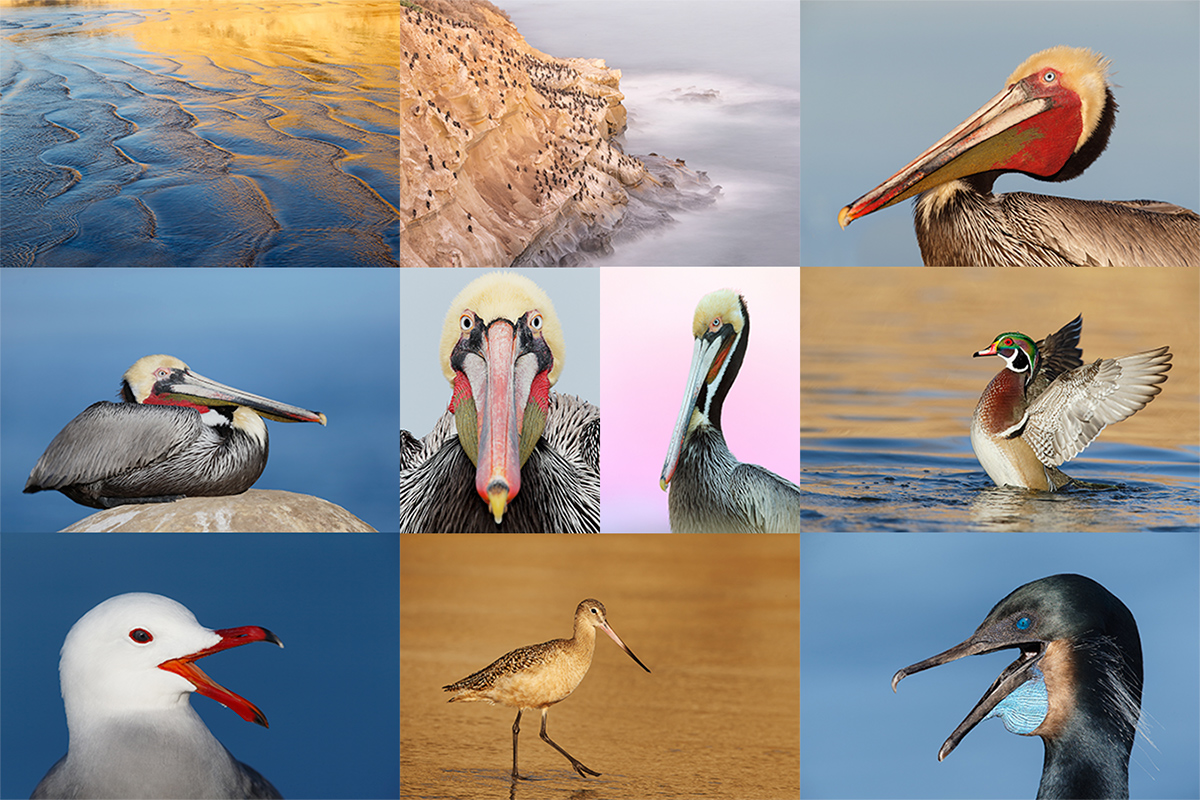
|
|
San Diego offers a wealth of very attractive natural history subjects. With annual visits spanning more than three decades I have lot of experience there….
|
With gorgeous subjects just sitting there waiting to have their pictures taken, photographing the pelicans on the cliffs is about as easy as nature photography gets. With the winds from the east almost every morning there is usually some excellent flight photography. And the pelicans are almost always doing something interesting: preening, scratching, bill pouch cleaning, or squabbling. And then there are those crazy head throws that are thought to be a form of intra-flock communication. You can do most of your photography with an 80- or 100-400 lens …
Did I mention that there are wealth of great birds and natural history subjects in San Diego in winter?
|
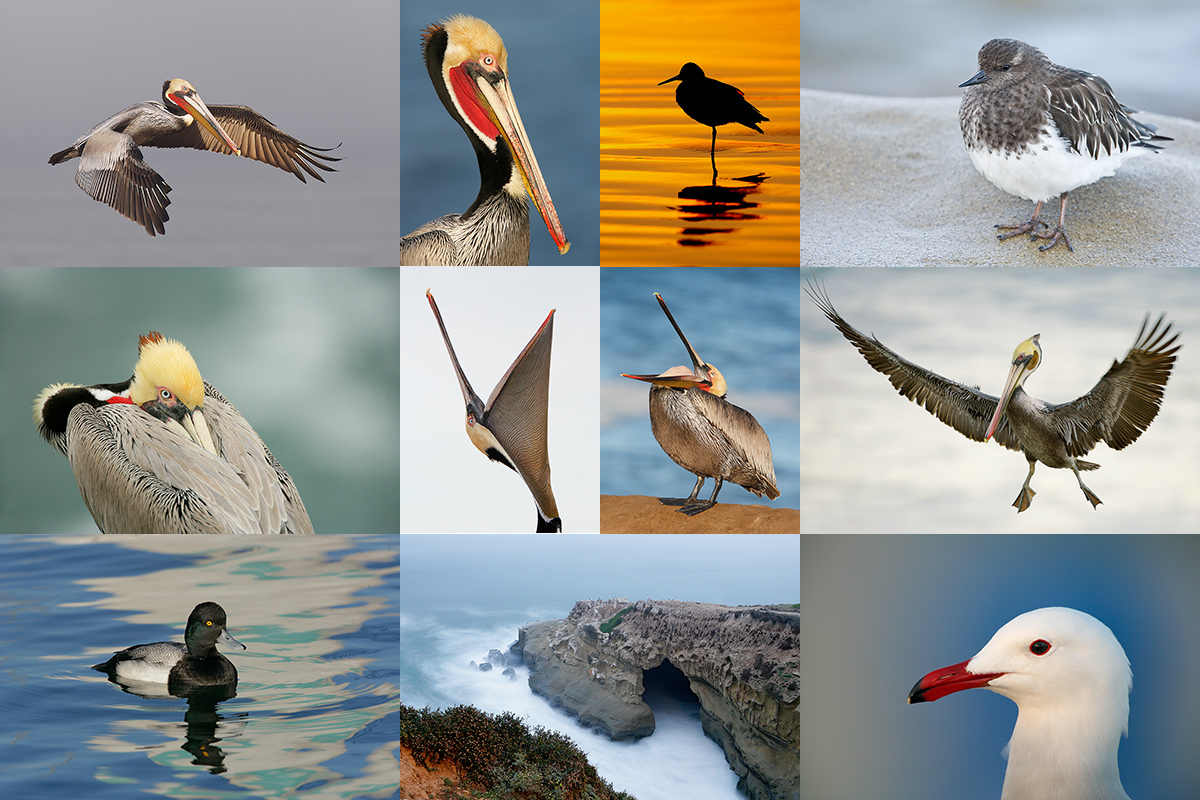
|
|
Though the pelicans will be the stars of the show on this IPT there will be many other handsome and captivating subjects in wonderful settings.
|
The San Diego Details
This IPT will include five 3 1/2 hour morning photo sessions, four 2 1/2 hour afternoon photo sessions, four lunches, and after-lunch image review and Photoshop sessions. To ensure early starts, breakfasts will be your responsibility. Dinners are on your own so that we can get some sleep.
A $599 non-refundable deposit is required to hold your slot for this IPT. You can send a check (made out to “Arthur Morris) to us at BIRDS AS ART, PO Box 7245, Indian Lake Estates, FL, 33855. Or call Jim or Jennifer at the office with a credit card at 863-692-0906. Your balance, payable only by check, will be due on 9/11//2016. If we do not receive your check for the balance on or before the due date we will try to fill your spot from the waiting list. Please print, complete, and sign the form that is linked to here and shoot it to us along with your deposit check. If you register by phone, please print, complete and sign the form as noted above and either mail it to us or e-mail the scan. If you have any questions, please feel free to contact me via e-mail.
January 12th, 2018 Stuff
I have been extremely lucky with the weather during my time in Phoenix with some nice sunrises and lots of cloudy mornings. I have stayed in most afternoons to nap and do my exercises. This morning took the cake … Read more below.
My physical therapist had a cancellation an hour after my 2:30pm appointment and invited me to stay for a double header. So I did. At this point I am not sure if I will have time to go out on Friday morning …
Thanks to all who left comments on yesterday’s boring in the fog hen image. I liked it too.
The Streak
Today makes one hundred sixty-five days in a row with a new educational blog post! This one took about an hour to prepare including the time spent optimizing the image. With all of my upcoming free time (or not …), the plan right now is to break the current record streak of 480 … Good health and good internet connections and my continuing insanity willing.


Booking.Com
Booking.Com came through for me twice again recently with both the DeSoto Fall IPT and next July’s UK Puffins, Gannets, and Bempton Pre-trip room reservations. And all the rates were great. If you’d like to give Booking.Com a shot, click here and you will earn a $25 reward. Thanks to the many who have already tried and used this great service.
Gear Questions and Advice
Too many folks attending BAA IPTs and dozens of folks whom I see in the field, and on BPN, are–out of ignorance–using the wrong gear especially when it comes to tripods and more especially, tripod heads… Please know that I am always glad to answer your gear questions via e-mail. Those questions might deal with systems, camera bodies, accessories, and/or lens choices and decisions.
A Perfect Dramatic Fire in the Mist Image. Made With Lots Of Skill, Vision, and Creativity. And Even More Luck! …
As I seriously screwed up the text that was here originally when cutting and pasting some text for another blog post, you will need to get by with the short version.
It was cold with lots of dew on the car as I left for Gilbert in the dark. I figured that there might be some ground fog on the pond I had been photographing at. I was right, and when the sun rose it was fire in the mist once again. The luck here was that I had rear button focused on the avocet and released. When something scared the coots I fired off two frames and in today’s featured image, the main subject flew itself into perfect focus!
Help Support the Blog
Please help support my (stupendous) efforts here on the blog by remembering to click on the logo link above each time that you shop Amazon. That would be greatly appreciated. There is no problem using your Prime account; just click on the link and log into your Prime account. With love, artie
If In Doubt …
If in doubt about using the BAA B&H affiliate link correctly, you can always start your search by clicking here. Please note that the tracking is invisible. Web orders only. Please, however, remember to shoot me your receipt via e-mail.




Please Remember to use my Affiliate Links and to Visit the New BAA Online Store 🙂
To show your appreciation for my continuing efforts here, we ask, as always, that you get in the habit of using my B&H affiliate links on the right side of the blog for all of your photo and electronics purchases. Please check the availability of all photographic accessories in the New BIRDS AS ART Online Store, especially the Mongoose M3.6 tripod head, Wimberley lens plates, Delkin flash cards and accessories, and LensCoat stuff.
As always, we sell only what I have used, have tested, and can depend on. We will not sell you junk. We know what you need to make creating great images easy and fun. And please remember that I am always glad to answer your gear questions via e-mail.
I would of course appreciate your using our B&H affiliate links for all of your major gear, video, and electronic purchases. For the photographic stuff mentioned in the paragraph above, and for everything else in the new store, we, meaning BAA, would of course greatly appreciate your business. Here is a huge thank you to the many who have been using our links on a regular basis and those who will be visiting the New BIRDS AS ART Online Store as well.
Facebook
Be sure to like and follow BAA on Facebook by clicking on the logo link upper right. Tanks a stack.
Typos
In all blog posts and Bulletins, feel free to e-mail or to leave a comment regarding any typos or errors. Just be right :).
January 11th, 2018 Stuff
It poured all night but quit raining before I left for Gilbert at 6:05am. It was mostly cloudy dark with a bit of fog and about 30 seconds of light drizzle as I made my way to my favorite impoundments. I photographed several Desert Cottontails, a few songbirds, and a few ducks. I used the Godox flash a lot, mostly experimenting with it. I had my therapy appointment at 11. I continue to pound away on my exercises and balloon blowing. I am feeling a bit better each day, especially the problematic left knee. More of the same is in store for Thursday plus a bit of packing for my flight to San Diego on Friday afternoon.
The Streak
Today makes one hundred sixty-four days in a row with a new educational blog post! This one took about an hour to prepare including the time spent optimizing the image. With all of my upcoming free time (or not …), the plan right now is to break the current record streak of 480 … Good health and good internet connections and my continuing insanity willing.


Booking.Com
Booking.Com came through for me twice again recently with both the DeSoto Fall IPT and next July’s UK Puffins, Gannets, and Bempton Pre-trip room reservations. And all the rates were great. If you’d like to give Booking.Com a shot, click here and you will earn a $25 reward. Thanks to the many who have already tried and used this great service.
Gear Questions and Advice
Too many folks attending BAA IPTs and dozens of folks whom I see in the field, and on BPN, are–out of ignorance–using the wrong gear especially when it comes to tripods and more especially, tripod heads… Please know that I am always glad to answer your gear questions via e-mail. Those questions might deal with systems, camera bodies, accessories, and/or lens choices and decisions.
Selling Your Used Photo Gear Through BIRDS AS ART
Selling your used (or like-new) photo gear through the BAA Blog is a great idea. We charge only a 5% commission. One of the more popular used gear for sale sites charged a minimum of 20%. Plus assorted fees! Yikes. They went out of business. And e-Bay fees are now up to 13%. The minimum item price here is $500 (or less for a $25 fee). If you are interested please scroll down here or shoot us an e-mail with the words Items for Sale Info Request cut and pasted into the Subject line :). Stuff that is priced fairly — I offer pricing advice to those who agree to the terms — usually sells in no time flat. Over the past year, we have sold many dozens of items. Do know that prices on some items like the EOS-1D Mark IV, the old Canon 100-400, the old 500mm, the EOS-7D and 7D Mark II and the original 400mm DO lens have been dropping steadily. You can always see the current listings by clicking on the Used Photo Gear tab on the orange-yellow menu bar near the top of each blog post page.
List of recent Used Gear Page Sales
Sales of cameras and lenses have been through the roof recently with stuff selling at prices that thill the buyers and please the sellers.
Hisham A. sold a Canon EOS 5D Mark III in very good condition for the BAA record low price of $999 in mid January.
Hisham A. sold his Canon 70-200mm f/2.8L IS II USM lens very good condition (with perfect glass and in perfect working order) for the BAA record low price of $999 and a Canon EF 400mm f/5.6 L USM lens in very good condition (with perfect glass and in perfect working order) for the BAA record low by far price of $549in early January.
Hisham A. sold a Canon Extender EF 1.4X III (teleconverter) in like-new good condition for $329 and the original Canon 24-105mm f/4L IS USM lens in like-new condition for $449 in late December.
BAA friend Jim Roetzel sold his Xtrahand Vest, green — size XL — for $275 in December.
Mike Rust sold his Canon 600mm f/4L IS II ISM lens in near-mint condition for $9396.00 and his Canon EF 24-105mm f/4L IS II USM lens in like-new condition for $699.00. Both on the first day of listing.
Mike Rust also sold his Canon EOS-1DX Mark II like-new condition for a BAA record-low, shock-the-world price of $3997.00, his Canon 400mm f/4 IS II DO USM lens in like-new condition for the amazing low price of $5999.00, his Canon EF 11-24mm f/4L USM Lens in like-new condition for $1799.00, a 1.4X III and two 2X III TCs, all in like-new condition for $329 each, and a Wimberley V2 Tripod Head in excellent condition with extras for $399.
IPT veteran Carolyn Peterson sold her Canon EOS 5D Mark III camera body in excellent condition for $1399 in mid-December.
Pradip Thachile sold his Canon EF 400mm f/4 IS DO lens (the original version) in excellent condition for the BAA record low price of $2097.00 in late December.
Joel Williams sold his Fujifilm XF 100-400mm f/4.5-5.6 R LM OIS WR lens in like-new condition for $1199 right after it was listed in mid-December.
Mike Newman sold his Canon EF 100mm f2.8/L IS USM macro lens in like-new condition for only $599 in mid-December, right after it was listed.
Joel Williams sold a Fujifilm XF 1.4x TC WR teleconverter in like-new condition for $299 in mid-December, 2017.
Mike Newman sold a Canon EF 600 F4/L USM IS II USA lens in like-new condition for the record-low BAA price of 9,398.00 within two days of listing it in early December.
New Listings
Canon EOS 5D Mark III
Multiple IPT veteran Gil Moe is offering a Canon EOS 5D Mark III in like-new condition for $$1249. The sale includes the original box and all the packagings and software, the front cap, the manual, one Canon battery, the battery charger, the unused lens strap, the cables, and and insured ground shipping via UPS or FEDEX to U.S. Addresses only. Your item will not ship until your check clears unless other arrangements are made.
Please contact Gil via e-mail or by phone at 909-732-1456 (Pacific time).
I owned and used this superb, full frame, 22mp digital body for several years. It was always my first choice for scenic, Urbex (urban exploration), and flower photography until I fell in love for a while with the 5DS R (for a lot more money!). Then I switched to the 5D IV body. In addition, I loved my 5D III body for birds with my big lenses and both TCs. I used mine to create many hundreds of high quality images. In pristine condition, Gil’s 5D III is a great value.. artie
Canon BG-E20 Battery Grip for EOS 5D Mark IV
Multiple IPT veteran Gil Moe is also offering a brand new in the box Canon BG-E20 Battery Grip for EOS 5D Mark IV for $259.
The sale includes insured ground shipping via UPS or FEDEX to U.S. Addresses only. Your item will not ship until your check clears unless other arrangements are made.
Please contact Gil via e-mail or by phone at 909-732-1456 (Pacific time).
The BG-E20 Battery Grip gives your 5D IV a pro body feel and the convenient vertical controls. You’d be a fool to purchase yours from B&H for $50 more …. artie
Canon EOS-1D Mark IV
BAA Record-low Price!
Jim Burns is offering an EOS-1D Mark4 Canon body in excellent plus for a BAA record low $998. The sale includes the front cap, two Canon LP-E4 batteries, the charger, the instructional manual, the two computer cords (video & download), and insured ground shipping via major courier to US addresses only. Your item will not ship until your check clears unless other arrangements are made.
Please contact Jim via e-mail or by phone at 1-602-616-9431 Mountain time.
Two dependable, rugged 1D Mark IVs served as my workhorse professional bodies for several years; I really enjoyed their 1.3X crop factors, the fast frame rate, and the excellent image quality. artie
Canon EOS 7D Mark II
Karen Jordan is offering a Canon EOS 7D Mark II digital camera body in near mint condition for $949. The sale includes the front body cap, the strap, the instructional manual, everything that came with the camera, and insured ground shipping via major courier to US addresses only. Your item will not ship until your check clears unless other arrangements are made.
Please contact Karen via e-mail or by phone at 206-437-8337 (Pacific time).
Both Patrick Sparkman and I used and loved the 7D Mark II until about two years ago when we both committed to using full frame Canon bodies. We both made some truly great images with it. Two of my three 2016 Nature’s Best honored entries were created with the 7D II, one still, and one video. One thing is for sure: the 7D Mark II is the greatest value ever in a digital camera body. With a new one going for $1499 you can save a cool $550 by grabbing Karen’s body. artie
Canon EF 100-400 f/4.5-5.6L IS Zoom Lens (the original 1-4)
BAA Record-low Price!
Karen Jordan is offering a Canon EF 100-400 f/4.5-5.6L IS Zoom Lens (the original 1-4) in excellent plus condition but for a single paint scratch for the BAA record low price of $528. The sale includes the rear lens cap, the front lens cap, the tough fabric zippered lens case, the original box and all that came in it, and insured Ground shipping via major courier. Your item will not ship until your check clears unless other arrangements are made.
Please contact Karen via e-mail or by phone at 206-437-8337 (Pacific time).
The older 100-400 is a versatile intermediate telephoto zoom lens with 1,000+ uses. It makes a great starter lens especially for folks who do general nature and wildlife in addition to birds. Over the years I’ve sold 100s of images made with this lens. And Denise Ippolito loved hers for many years forsaking it only recently.
ISO 4000 & Flash in the Fog
Ring-necked Duck is common as all get-out in Phoenix and the hens are relatively plain and drab as compared to the handsome, showy drakes. I experimented quite a bit with the flash in the fog and it seemed pretty clear that at fill flash levels that the flash did not so a whole lot, likely because the fog diffused the light from the flash. I have also been experimenting a lot with some very high ISOs with the 1DX II and have been impressed. You do lose quite a bit of image quality but the point is about finding out what the capabilities are when you have a great bird in a beautiful situation with no light …
The Wake?
Do you like the inclusion of the partial wake in the upper left hand corner of the image? It was of course from another duck swimming nearby. It would have been easy to remove in a variety of ways.
The Image Optimization
The image optimization was relatively straightforward. After converting the image in DPP 4. I executed a decent crop from below and from our left, darkened the pupil using Tim Grey Dodge and Burn, applied a 15% layer of Image > Auto Tone and a 10% layer of Image > Auto Contrast. These last two added at least some pop to a terribly flat image.
The Godox Flash/Save $300!
The Godox VING V860IIC TTL Li-Ion Flash Kit for Canon Cameras is simply amazing. Priced at exactly $300 less than the Canon Speedlite 600EX II-RT, the Godox flash is a virtual replica of the top of the line Canon 600 EX II-RT. I will soon be publishing a simple guide to using the Godox flash for bird photography. In the meantime you can learn everything there is to know about using flash for bird photography in the Flash Simplified section of The Art of Bird Photography II (ABP II: 916 pages, 900+ images on CD only): ETTL flash as fill, flash as main light techniques, high speed synch flash (available on the Godox flash) and manual flash. Plus tons more!
January 10th, 2018 Stuff
The thing about the Riparian Preserve at Gilbert Water Ranch is that yesterday’s hotspot is today’s too-flooded impoundment. The folks in charge move water around faster than I have ever seen. I am really excited with the results of my physical therapy …
I woke at 3:15am on Tuesday, finished editing all of my Phoenix photos, did my exercises, and then enjoyed a nice photo session. I left the Water Ranch just after 10:00am. I fly to San Diego on Friday afternoon.
Click on the logo-link above for great holiday savings!
$300 off on the Canon 100-400 II!
The Streak
Today makes one hundred sixty-three days in a row with a new educational blog post! This one took about an hour to prepare including the time spent optimizing the image. With all of my upcoming free time (or not …), the plan right now is to break the current record streak of 480 … Good health and good internet connections and my continuing insanity willing.
Canon EOS 5D Mark III
Free 1.4X II Add-on: JAN 9, 2018.
Hisham A. is offering a Canon EOS 5D Mark III in very good condition (in perfect working order) for the BAA record low price of $999. The sale includes a 1.4X II teleconverter, an extra Watson battery, the front lens cap, and all the stuff that came in the box as well as insured ground shipping to US addresses via major courier. Your item will not ship until your check clears unless other arrangements are made. Photos are available upon request.
Please contact Hisham via e-mail or by phone at 720 771 2693 (Eastern time).
I used my 5D Mark III to produce high quality image files for all of my landscape, flower, and Urbex photography. And I used it often for bird photography with my f/4 super-telephoto lenses with both the 1.4X and the 2X TCs. As long as you have firmware version 1.2.1 or higher you will have AF at f/8 with the center AF point (along with the four assist points). artie
Booking.Com
Booking.Com came through for me twice again recently with both the DeSoto Fall IPT and next July’s UK Puffins, Gannets, and Bempton Pre-trip room reservations. And all the rates were great. If you’d like to give Booking.Com a shot, click here and you will earn a $25 reward. Thanks to the many who have already tried and used this great service.
Gear Questions and Advice
Too many folks attending BAA IPTs and dozens of folks whom I see in the field, and on BPN, are–out of ignorance–using the wrong gear especially when it comes to tripods and more especially, tripod heads… Please know that I am always glad to answer your gear questions via e-mail. Those questions might deal with systems, camera bodies, accessories, and/or lens choices and decisions.
Th DPP 4 Screen Capture
So why did I pick an AF point that placed the bird on the wrong side of the frame looking out? The bird had been preening its back with its long bill; when it paused and posed so I pushed the shutter button knowing that moving the bird back in the frame using techniques from APTATS II would be a piece of cake.
|
|
|
This is the optimized version of today’s featured image. It was made at the Riparian Preserve at Gilbert Water Ranch with the Induro GIT304L Grand Series 3 Stealth Carbon Fiber Tripod/Mongoose M3.6-mounted Canon EF 600mm f/4L IS II USM lens, the Canon Extender EF 2X III, and the blazingly fast Canon EOS-1D X Mark II. ISO 800. Evaluative metering about +2/3 stop: 1/500 sec. at f/9 in Manual mode. AWB at 8:47am on a cloudy morning.
LensAlign/FocusTune micro-adjustment: -5.
Four rows up and two to the left of the center AF point/AI Servo/Expand shutter button AF was active at the moment of exposure. The selected AF point was on the side of the bird’s neck just below and slightly behind the bird’s eye.
Long-billed Dowitcher, first winter plumage posing
|
Another Boring, Perfect Image Lacking both Drama and Creativity …
There’s no drama here. There was no creativity involved; heck, I put the bird on the wrong side of the frame. What could be more boring than a bird just standing in the water?
Would You Be Proud of this Image?
Would you be proud to have created this image? Why or why not?
More on Coming Soon
February 2018 Spoonbill Boat IPT: FEB 23-25, 2018/2 1/2 days with three morning spoonbill sessions on the boat.
Two Fort DeSoto IPTs (April and May, 2018).
Three Gatorland IPTs (March, April, and May, 2018 — including early entry and late stay — tentative).
Three Sandhill Crane chicks and colts Master Classes at Indian Lake Estates (March).
The Master Classes will likely be announced soon. They will be small groups — strictly limited to four photographers — with the first folks who register staying at my home and the others staying at a chain motel in Lake Wales. Live, think, and breathe photography from Friday afternoon through lunch on Monday morning; all meals included. We will enjoy three morning photography sessions with the main subjects being tame Sandhill Cranes almost surely with chicks or colts. Also vultures and Cattle Egrets and more. Limpkins possible. There will be three afternoon photo sessions with hopefully glorious sunsets like the ones you have been seeing on the blog recently. I will micro-adjust one of your lenses during a group instructional session and all will be welcome to practice what they have learned during the breaks using my lighting gear. We will sit together around my dining room table and pick everyone’s keepers, enjoy guided Photoshop sessions, and, on Monday before lunch, folks can make a single large print of their favorite image.
Folks who would like advance notice on any of the above are welcome to shoot me an e-mail. Right now there are two folks signed up for the spoonbill IPT with just four openings left. If you would like to join us, please do not tarry.
Support the Blog
Please help support my (stupendous) efforts here on the blog by remembering to click on the logo link above each time that you shop Amazon. That would be greatly appreciated. There is no problem using your Prime account; just click on the link and log into your Prime account. With love, artie
If In Doubt …
If in doubt about using the BAA B&H affiliate link correctly, you can always start your search by clicking here. Please note that the tracking is invisible. Web orders only. Please, however, remember to shoot me your receipt via e-mail.




Please Remember to use my Affiliate Links and to Visit the New BAA Online Store 🙂
To show your appreciation for my continuing efforts here, we ask, as always, that you get in the habit of using my B&H affiliate links on the right side of the blog for all of your photo and electronics purchases. Please check the availability of all photographic accessories in the New BIRDS AS ART Online Store, especially the Mongoose M3.6 tripod head, Wimberley lens plates, Delkin flash cards and accessories, and LensCoat stuff.
As always, we sell only what I have used, have tested, and can depend on. We will not sell you junk. We know what you need to make creating great images easy and fun. And please remember that I am always glad to answer your gear questions via e-mail.
I would of course appreciate your using our B&H affiliate links for all of your major gear, video, and electronic purchases. For the photographic stuff mentioned in the paragraph above, and for everything else in the new store, we, meaning BAA, would of course greatly appreciate your business. Here is a huge thank you to the many who have been using our links on a regular basis and those who will be visiting the New BIRDS AS ART Online Store as well.
Facebook
Be sure to like and follow BAA on Facebook by clicking on the logo link upper right. Tanks a stack.
Typos
In all blog posts and Bulletins, feel free to e-mail or to leave a comment regarding any typos or errors. Just be right :).
January 9th, 2018 Stuff
I headed out early to Gilbert Water Ranch on Monday.The sunrise was spectacular but the night-heron was not home and the geese were swimming only in the dark water rather than in the fluorescent orange/pink water … Then I did Canada Goose flight blurs and bathing Mallard blurs. I was headed back to my lodgings early when I ran a across a pond fill with Great Egrets fishing and flying so I stayed another hour and made all sharp images 🙂
Then off to the physical therapist and now some free time before dinner. Thanks to all the folks who have been commenting so much recently.
Click on the logo-link above for great holiday savings!
$300 off on the Canon 100-400 II!
The Streak
Today makes one hundred sixty-two days in a row with a new educational blog post! This one took about an hour to prepare including the time spent optimizing the image. With all of my upcoming free time (or not …), the plan right now is to break the current record streak of 480 … Good health and good internet connections and my continuing insanity willing.
Booking.Com
Booking.Com came through for me twice again recently with both the DeSoto Fall IPT and next July’s UK Puffins, Gannets, and Bempton Pre-trip room reservations. And all the rates were great. If you’d like to give Booking.Com a shot, click here and you will earn a $25 reward. Thanks to the many who have already tried and used this great service.
Gear Questions and Advice
Too many folks attending BAA IPTs and dozens of folks whom I see in the field, and on BPN, are–out of ignorance–using the wrong gear especially when it comes to tripods and more especially, tripod heads… Please know that I am always glad to answer your gear questions via e-mail. Those questions might deal with systems, camera bodies, accessories, and/or lens choices and decisions.
Weather Forecast: Cloudy with a chance of blurs …
On cloudy days, necessity if often the mother of invention. In order to make sharp images at 1200mm I would have needed to use a crazy high ISO. Bathing birds require a very specific depth of water; that is why you will often see one bird after another bathe in a specific area. Sometimes the required depth is fairly consistent and allows several birds to bathe in close proximity to each other. On Monday morning I passed on many opportunities when there were too many Mallards in the frame. Working in Tv mode when trying to create pleasing blurs allows you complete control over shutter speed. At 1/60 sec. you can get often wind up with a pleasing degree of blurring and a passably sharp head and eye.
Like it or Hate It?
All are invited to leave a comment and let the group what they like or dot’t like about today’s featured image.
More on Coming Soon
February 2018 Spoonbill Boat IPT: FEB 23-25, 2018/2 1/2 days with three morning spoonbill sessions on the boat.
Two Fort DeSoto IPTs (April and May, 2018).
Three Gatorland IPTs (March, April, and May, 2018 — including early entry and late stay — tentative).
Three Sandhill Crane chicks and colts Master Classes at Indian Lake Estates (March).
The Master Classes will likely be announced soon. They will be small groups — strictly limited to four photographers — with the first folks who register staying at my home and the others staying at a chain motel in Lake Wales. Live, think, and breathe photography from Friday afternoon through lunch on Monday morning; all meals included. We will enjoy three morning photography sessions with the main subjects being tame Sandhill Cranes almost surely with chicks or colts. Also vultures and Cattle Egrets and more. Limpkins possible. There will be three afternoon photo sessions with hopefully glorious sunsets like the ones you have been seeing on the blog recently. I will micro-adjust one of your lenses during a group instructional session and all will be welcome to practice what they have learned during the breaks using my lighting gear. We will sit together around my dining room table and pick everyone’s keepers, enjoy guided Photoshop sessions, and, on Monday before lunch, folks can make a single large print of their favorite image.
Folks who would like advance notice on any of the above are welcome to shoot me an e-mail. Right now there are two folks signed up for the spoonbill IPT with just four openings left. If you would like to join us, please do not tarry.
Support the Blog
Please help support my (stupendous) efforts here on the blog by remembering to click on the logo link above each time that you shop Amazon. That would be greatly appreciated. There is no problem using your Prime account; just click on the link and log into your Prime account. With love, artie
If In Doubt …
If in doubt about using the BAA B&H affiliate link correctly, you can always start your search by clicking here. Please note that the tracking is invisible. Web orders only. Please, however, remember to shoot me your receipt via e-mail.




Please Remember to use my Affiliate Links and to Visit the New BAA Online Store 🙂
To show your appreciation for my continuing efforts here, we ask, as always, that you get in the habit of using my B&H affiliate links on the right side of the blog for all of your photo and electronics purchases. Please check the availability of all photographic accessories in the New BIRDS AS ART Online Store, especially the Mongoose M3.6 tripod head, Wimberley lens plates, Delkin flash cards and accessories, and LensCoat stuff.
As always, we sell only what I have used, have tested, and can depend on. We will not sell you junk. We know what you need to make creating great images easy and fun. And please remember that I am always glad to answer your gear questions via e-mail.
I would of course appreciate your using our B&H affiliate links for all of your major gear, video, and electronic purchases. For the photographic stuff mentioned in the paragraph above, and for everything else in the new store, we, meaning BAA, would of course greatly appreciate your business. Here is a huge thank you to the many who have been using our links on a regular basis and those who will be visiting the New BIRDS AS ART Online Store as well.
Facebook
Be sure to like and follow BAA on Facebook by clicking on the logo link upper right. Tanks a stack.
Typos
In all blog posts and Bulletins, feel free to e-mail or to leave a comment regarding any typos or errors. Just be right :).
January 8th, 2018 Stuff
Sunday was a wonderful day. I met multiple IPT veteran Muriel McClellan who introduced me to my new physical therapist, Amy Novotny, Amy, Bryan Holliday, and his lovely girlfriend Kim, all photographers. We did the Black-crowned Night-Herons at sunrise and then switched to my favorite mudflat where we had some great action with several species of ducks and some Long-billed Dowitchers. Muriel very generously treated the whole gang to lunch at a pita place. After lunch we went to Freestone Park; the three pairs of Canvasbacks were a lot more cooperative than they had been on Saturday.
My Postural Restoration physical therapy is going very well and my very well be life-altering. More on that over time. I did get to answer quite a few e-mails early this morning but I still have tons more today including another dozen or so that arrived today while I was out having fun.
Click on the logo-link above for great holiday savings!
$300 off on the Canon 100-400 II!
The Streak
Today makes one hundred sixty-one days in a row with a new educational blog post! This one took about an hour to prepare including the time spent optimizing the image. With all of my upcoming free time (or not …), the plan right now is to break the current record streak of 480 … Good health and good internet connections and my continuing insanity willing.
Booking.Com
Booking.Com came through for me twice again recently with both the DeSoto Fall IPT and next July’s UK Puffins, Gannets, and Bempton Pre-trip room reservations. And all the rates were great. If you’d like to give Booking.Com a shot, click here and you will earn a $25 reward. Thanks to the many who have already tried and used this great service.
Gear Questions and Advice
Too many folks attending BAA IPTs and dozens of folks whom I see in the field, and on BPN, are–out of ignorance–using the wrong gear especially when it comes to tripods and more especially, tripod heads… Please know that I am always glad to answer your gear questions via e-mail. Those questions might deal with systems, camera bodies, accessories, and/or lens choices and decisions.
ACR Screen Capture
Note the perfect histogram. Note that the RGB values for the brightest whites were from the ring around the base of the bill not from the ring around the bill. Note that the RGB values of 245, 245, 244 indicate almost perfectly neutral WHITEs. Note that I did not max out the WHITEs to 254, 254, 254 but opted to leave them about ten points short of that. Moving the Highlight slider to -53 darkened the water to a nice rich blue.
|
|
|
This image was created at the Riparian Preserve at Gilbert Water Ranch, in Phoenix, AZ on the morning of Sunday, January 7. I used the Induro GIT304L Grand Series 3 Stealth Carbon Fiber Tripod/Mongoose M3.6-mounted Canon EF 600mm f/4L IS II USM lens, the Canon Extender EF 2X III, and my the blazingly fast Canon EOS-1D X Mark II. ISO 800. Evaluative metering about +2/3 stop: 1/250 sec. at f/9 in Manual mode. AWB at 8:34am on a sunny morning with a light cloud in front of the sun.
LensAlign/FocusTune micro-adjustment: -5.
Two AF points above the center AF point/AI Servo/Expand shutter button AF was active at the moment of exposure. The selected AF point was placed squarely on the duck’s cheek directly below and right on the same plane as the duck’s eye. Click on the image to enjoy a larger version.
Ring-necked Duck drake partial body shot
|
Image Question
Do you like this image? Why or why not?
The Image Design
Please leave a comment and let us know what you think of the image design here.
More on Coming Soon
February 2018 Spoonbill Boat IPT: FEB 23-25, 2018/2 1/2 days with three morning spoonbill sessions on the boat (definite!)
Two Fort DeSoto IPTs (April and May, 2018)
Three Gatorland IPTs (March, April, and May, 2018 — including early entry and late stay — tentative)
Three Sandhill Crane chicks and colts Master Classes at Indian Lake Estates (March)
The Master Classes will be small groups — strictly limited to four photographers — with the first folks who register staying at my home and the others staying at a chain motel in Lake Wales. Live, think, and breathe photography from Friday afternoon through lunch on Monday morning; all meals included. We will enjoy three morning photography sessions with the main subjects being tame Sandhill Cranes almost surely with chicks or colts. Also vultures and Cattle Egrets and more. Limpkins possible. There will be three afternoon photo sessions with hopefully glorious sunsets like the ones you have been seeing on the blog recently. I will micro-adjust one of your lenses during a group instructional session and all will be welcome to practice what they have learned during the breaks using my lightingbgear. We will sit together around my dining room table and pick everyone’s keepers, enjoy guided Photoshop sessions, and, on Monday before lunch, folks can make a single large print of their favorite image.
Folks who would like advance notice on any of the above are welcome to shoot me an e-mail. Right now there are two folks signed up for the spoonbill IPT with just four openings left. If you would like to join us, please do not tarry.
Support the Blog
Please help support my (stupendous) efforts here on the blog by remembering to click on the logo link above each time that you shop Amazon. That would be greatly appreciated. There is no problem using your Prime account; just click on the link and log into your Prime account. With love, artie
If In Doubt …
If in doubt about using the BAA B&H affiliate link correctly, you can always start your search by clicking here. Please note that the tracking is invisible. Web orders only. Please, however, remember to shoot me your receipt via e-mail.




Please Remember to use my Affiliate Links and to Visit the New BAA Online Store 🙂
To show your appreciation for my continuing efforts here, we ask, as always, that you get in the habit of using my B&H affiliate links on the right side of the blog for all of your photo and electronics purchases. Please check the availability of all photographic accessories in the New BIRDS AS ART Online Store, especially the Mongoose M3.6 tripod head, Wimberley lens plates, Delkin flash cards and accessories, and LensCoat stuff.
As always, we sell only what I have used, have tested, and can depend on. We will not sell you junk. We know what you need to make creating great images easy and fun. And please remember that I am always glad to answer your gear questions via e-mail.
I would of course appreciate your using our B&H affiliate links for all of your major gear, video, and electronic purchases. For the photographic stuff mentioned in the paragraph above, and for everything else in the new store, we, meaning BAA, would of course greatly appreciate your business. Here is a huge thank you to the many who have been using our links on a regular basis and those who will be visiting the New BIRDS AS ART Online Store as well.
Facebook
Be sure to like and follow BAA on Facebook by clicking on the logo link upper right. Tanks a stack.
Typos
In all blog posts and Bulletins, feel free to e-mail or to leave a comment regarding any typos or errors. Just be right :).
January 7th, 2018 Stuff
Bryan Holliday and I had a great day starting with a wicked sunrise and some great duck photography at the Riparian Preserve at Gilbert Water Ranch where the ducks were so cooperative on the still water with gorgeous reflections that we thought that a hunter had put out a raft of decoys. After lunch we continued to enjoy the bright overcast conditions at Freestone Park where I made today’s featured images of a handsome duck that has long eluded me. Thanks to the several folks who suggested Freestone for Canvasbacks!
I am still far behind on e-mails. Please bear with me; you should hear from me by late Monday at the worst.
Click on the logo-link above for great holiday savings!
$300 off on the Canon 100-400 II!
The Streak
Today makes one hundred sixty-one days in a row with a new educational blog post! This one took about an hour to prepare including the time spent optimizing the image. With all of my upcoming free time (or not …), the plan right now is to break the current record streak of 480 … Good health and good internet connections and my continuing insanity willing.
Booking.Com
Booking.Com came through for me twice again recently with both the DeSoto Fall IPT and next July’s UK Puffins, Gannets, and Bempton Pre-trip room reservations. And all the rates were great. If you’d like to give Booking.Com a shot, click here and you will earn a $25 reward. Thanks to the many who have already tried and used this great service.
Gear Questions and Advice
Too many folks attending BAA IPTs and dozens of folks whom I see in the field, and on BPN, are–out of ignorance–using the wrong gear especially when it comes to tripods and more especially, tripod heads… Please know that I am always glad to answer your gear questions via e-mail. Those questions might deal with systems, camera bodies, accessories, and/or lens choices and decisions.
The DPP 4 Screen Capture for Today’s Featured Image
Note that the original was a bit under-exposed; I added 1/3 stop of light during the RAW conversion in DPP 4 by moving the Brightness slider to +0.33. And even though the flash brightened the canny’s brick red head nicely moving the Shadow slider to +4 really brought it to life without bringing up the noise. That is a huge plus to DPP 4 conversions. All that I did with the TIFF in Photoshop was some Digital Eye Doctor work on the pupil.
I will be sharing lots more info on the Godox flash for Canon in the near future; briefly it costs only a fraction of the Canon Speedlite 600EX-RT but is every bit as good with a great rechargeable battery. And, I will teach you how to set fill simply in ETTL mode.
1200mm + Fill Flash = Just Ducky Perfection!
Bryan Holliday took on on the chin for the team by driving my rental car back to Gilbert to grab a box of duck bait in the form of oat cereal; bread is not an allowed food but the oat cereal is. While he was one of the three drake Canvasbacks swam by me … I made hay with the one perfect frame out of a series of about twenty. As this was one of my target species for Phoenix I was a very happy man.
So What is Perfect?
There are several elements that make this photograph pretty close to perfect. What are they? On the other hand, does anything about this image bug you? Either way, please leave a comment.
More on Coming Soon
February 2018 Spoonbill Boat IPT: FEB 23-25, 2018/2 1/2 days with three morning spoonbill sessions on the boat (definite!)
Two Fort DeSoto IPTs (April and May, 2018)
Three Gatorland IPTs (March, April, and May, 2018 — including early entry and late stay — tentative)
Three Sandhill Crane chicks and colts Master Classes at Indian Lake Estates (March)
The Master Classes will be small groups — strictly limited to four photographers — with the first folks who register staying at my home and the others staying at a chain motel in Lake Wales. Live, think, and breathe photography from Friday afternoon through lunch on Monday morning; all meals included. We will enjoy three morning photography sessions with the main subjects being tame Sandhill Cranes almost surely with chicks or colts. Also vultures and Cattle Egrets and more. Limpkins possible. There will be three afternoon photo sessions with hopefully glorious sunsets like the ones you have been seeing on the blog recently. I will micro-adjust one of your lenses during a group instructional session and all will be welcome to practice what they have learned during the breaks using my lightingbgear. We will sit together around my dining room table and pick everyone’s keepers, enjoy guided Photoshop sessions, and, on Monday before lunch, folks can make a single large print of their favorite image.
Folks who would like advance notice on any of the above are welcome to shoot me an e-mail. Right now there are two folks signed up for the spoonbill IPT with just four openings left. If you would like to join us, please do not tarry.
Support the Blog
Please help support my (stupendous) efforts here on the blog by remembering to click on the logo link above each time that you shop Amazon. That would be greatly appreciated. There is no problem using your Prime account; just click on the link and log into your Prime account. With love, artie
If In Doubt …
If in doubt about using the BAA B&H affiliate link correctly, you can always start your search by clicking here. Please note that the tracking is invisible. Web orders only. Please, however, remember to shoot me your receipt via e-mail.




Please Remember to use my Affiliate Links and to Visit the New BAA Online Store 🙂
To show your appreciation for my continuing efforts here, we ask, as always, that you get in the habit of using my B&H affiliate links on the right side of the blog for all of your photo and electronics purchases. Please check the availability of all photographic accessories in the New BIRDS AS ART Online Store, especially the Mongoose M3.6 tripod head, Wimberley lens plates, Delkin flash cards and accessories, and LensCoat stuff.
As always, we sell only what I have used, have tested, and can depend on. We will not sell you junk. We know what you need to make creating great images easy and fun. And please remember that I am always glad to answer your gear questions via e-mail.
I would of course appreciate your using our B&H affiliate links for all of your major gear, video, and electronic purchases. For the photographic stuff mentioned in the paragraph above, and for everything else in the new store, we, meaning BAA, would of course greatly appreciate your business. Here is a huge thank you to the many who have been using our links on a regular basis and those who will be visiting the New BIRDS AS ART Online Store as well.
Facebook
Be sure to like and follow BAA on Facebook by clicking on the logo link upper right. Tanks a stack.
Typos
In all blog posts and Bulletins, feel free to e-mail or to leave a comment regarding any typos or errors. Just be right :).
January 6th, 2018 Stuff
Apologies to those who are patiently waiting to hear from me via e-mail. I have been very busy with physical therapy sessions and tons of exercising when I am not photographing; almost all of that involves blowing up balloons. Yes, blowing up balloons … I did get back to Gilbert Water Ranch this morning to find that the lake that was attracting lots of shorebirds had been filled to overflowing in less than a day. Goodbye mud, goodbye birds! There are plenty of other spots in the various lakes for the dowitchers and stilts and avocets to feed, but none are any good for photography.
Click on the logo-link above for great holiday savings!
$300 off on the Canon 100-400 II!
The Streak
Today makes one hundred sixty days in a row with a new educational blog post! This one took about an hour to prepare including the time spent optimizing the image. With all of my upcoming free time (or not …), the plan right now is to break the current record streak of 480 … Good health and good internet connections and my continuing insanity willing.
Booking.Com
Booking.Com came through for me twice again recently with both the DeSoto Fall IPT and next July’s UK Puffins, Gannets, and Bempton Pre-trip room reservations. And all the rates were great. If you’d like to give Booking.Com a shot, click here and you will earn a $25 reward. Thanks to the many who have already tried and used this great service.
Gear Questions and Advice
Too many folks attending BAA IPTs and dozens of folks whom I see in the field, and on BPN, are–out of ignorance–using the wrong gear especially when it comes to tripods and more especially, tripod heads… Please know that I am always glad to answer your gear questions via e-mail. Those questions might deal with systems, camera bodies, accessories, and/or lens choices and decisions.
|
|
|
This image was created at the Riparian Preserve at Gilbert Water Ranch in Phoenix, AZ on my first morning out. With my tripod lowered, I was seated behind the Induro GIT304L Grand Series 3 Stealth Carbon Fiber Tripod/Mongoose M3.6-mounted Canon EF 600mm f/4L IS II USM lens, the Canon Extender EF 1.4X III, and my favorite shorebird photography camera body, the Canon EOS 5D Mark IV. ISO 800. Evaluative metering +2 2/3 stops: 1/200 sec. at f/5.6 in Manual mode. AWB: K7500 at 4:28pm on a cloudy afternoon.
LensAlign/FocusTune micro-adjustment: -1.
One AF point above the center AF point/AI Servo/Expand shutter button focus was active at the moment of exposure. It is obvious from looking at the DPP 4 screen capture above that the left assist point caught and held focus on the bill. Too bad that Canon does not show us not the selected point and the active assist point or points.
Click on the image to enjoy a larger version.
DPP 4 Screen Capture
|
The DPP 4 Screen Capture for Today’s Featured Image
Note the perfect histogram with the light tones all the way to the right. Note that even though the RGB values, 240, 244, 250 showed a bit of a BLUE cast that I had moved the Color fine-tune dot toward BLUE. If I had moved the Color fine-tune dot away from BLUE and toward RED then the reflection would have been way too warm. As presented, the bird is a nice neutral gray.
|
|
|
This image was created at the Riparian Preserve at Gilbert Water Ranch in Phoenix, AZ on my first morning out. With my tripod lowered, I was seated behind the Induro GIT304L Grand Series 3 Stealth Carbon Fiber Tripod/Mongoose M3.6-mounted Canon EF 600mm f/4L IS II USM lens, the Canon Extender EF 1.4X III, and my favorite shorebird photography camera body, the Canon EOS 5D Mark IV. ISO 800. Evaluative metering +2 1/3 stops: 1/200 sec. at f/5.6 in Manual mode. AWB: K7500 at 4:28pm on a cloudy afternoon.
LensAlign/FocusTune micro-adjustment: -1.
One AF point above the center AF point/AI Servo/Expand shutter button focus was active at the moment of exposure. It is obvious from looking at the DPP 4 screen capture above that the left assist point caught and held focus on the bill. Too bad that Canon does not show us not the selected point and the active assist point or points.
Click on the image to enjoy a larger version.
DPP 4 Screen Capture Long-billed Dowitcher, first winter foraging
|
Sandpiper Photography Tips Part II
Once a foraging bird is square to the back of the camera (or angled slightly toward you) and fills about half the frame, acquire focus and push and hold the shutter speed until the situation changes. When working at an intermediate shutter speed as I was with today’s image (1/200 sec.) some of the photos will be lost to motion blur and some will be sharp. Dowitchers and other species feed like sewing machines. Firing long bursts will usually yield a variety of sharp images, some with the head nearly underwater and the bill completely submerged, some with the bill completely out of the water, and many in between those two extremes. The only option in cloudy conditions is to go with two or three or more stops of ISO; the drawback there is an increase in noise and a decrease in image quality. I prefer to gamble a bit, blast away, and wind up with a few representative sharp images.
Image Questions
- 1-Why is there a reddish cast to the bird’s reflection? (Note: if you look closely there is a clue …
- 2-Why did I move the selected AF point up from the center?
More on Coming Soon
February 2018 Spoonbill Boat IPT (definite!)
Two Fort DeSoto IPTs (April and May, 2018)
Three Gatorland IPTs (March, April, and May, 2018 — including early entry and late stay — tentative)
Three Sandhill Crane chicks and colts Master Classes at Indian Lake Estates (March)
The Master Classes will be small groups — strictly limited to four photographers — with the first folks who register staying at my home and the others staying at a chain motel in Lake Wales. Live, think, and breathe photography from Friday afternoon through lunch on Monday morning; all meals included. We will enjoy three morning photography sessions with the main subjects being tame Sandhill Cranes almost surely with chicks or colts. Also vultures and Cattle Egrets and more. Limpkins possible. There will be three afternoon photo sessions with hopefully glorious sunsets like the ones you have been seeing on the blog recently. I will micro-adjust one of your lenses during a group instructional session and all will be welcome to practice what they have learned during the breaks using my lighting gear. We will sit together around my dining room table and pick everyone’s keepers, enjoy guided Photoshop sessions, and, on Monday before lunch, folks can make a single large print of their favorite image.
Folks who would like advance notice on any of the above are welcome to shoot me an e-mail. Right now there is lots of interest in all of the above offerings. Folks who have already e-mailed me will be receiving the first invites soon, starting with the Spoonbill IPT.
Support the Blog
Please help support my (stupendous) efforts here on the blog by remembering to click on the logo link above each time that you shop Amazon. That would be greatly appreciated. There is no problem using your Prime account; just click on the link and log into your Prime account. With love, artie
If In Doubt …
If in doubt about using the BAA B&H affiliate link correctly, you can always start your search by clicking here. Please note that the tracking is invisible. Web orders only. Please, however, remember to shoot me your receipt via e-mail.




Please Remember to use my Affiliate Links and to Visit the New BAA Online Store 🙂
To show your appreciation for my continuing efforts here, we ask, as always, that you get in the habit of using my B&H affiliate links on the right side of the blog for all of your photo and electronics purchases. Please check the availability of all photographic accessories in the New BIRDS AS ART Online Store, especially the Mongoose M3.6 tripod head, Wimberley lens plates, Delkin flash cards and accessories, and LensCoat stuff.
As always, we sell only what I have used, have tested, and can depend on. We will not sell you junk. We know what you need to make creating great images easy and fun. And please remember that I am always glad to answer your gear questions via e-mail.
I would of course appreciate your using our B&H affiliate links for all of your major gear, video, and electronic purchases. For the photographic stuff mentioned in the paragraph above, and for everything else in the new store, we, meaning BAA, would of course greatly appreciate your business. Here is a huge thank you to the many who have been using our links on a regular basis and those who will be visiting the New BIRDS AS ART Online Store as well.
Facebook
Be sure to like and follow BAA on Facebook by clicking on the logo link upper right. Tanks a stack.
Typos
In all blog posts and Bulletins, feel free to e-mail or to leave a comment regarding any typos or errors. Just be right :).
January 5th, 2018 Stuff
Too busy tonight for much stuff other than to say that all is well. The sale of all of Mike Rust’s gear was recently finalized; all that remains is one of the two 2X III TCs:
Canon EF Extender 2X III (teleconverter)
Mike Rust is also offering a Canon Extender EF 2X III (teleconverter) in like-new condition for $349.00. The sale includes the front and rear caps, the suede pouch, and insured ground shipping via major courier to US addresses only. Your item will not ship until your check clears unless other arrangements are made.
Please contact Mike via e-mail or by phone at 1-360-420-1274 (Pacific time).
As regular readers know I use my teleconverters more than any other photographer: on big trips I travel with two 2X TCs. artie
Click on the logo-link above for great holiday savings!
$300 off on the Canon 100-400 II!
The Streak
Today makes one hundred fifty-nine days in a row with a new educational blog post! This one took well less than an hour to prepare including the time spent optimizing the image. With all of my upcoming free time (or not …), the plan right now is to break the current record streak of 480 … Good health and good internet connections and my continuing insanity willing.
Booking.Com
Booking.Com came through for me twice again recently with both the DeSoto Fall IPT and next July’s UK Puffins, Gannets, and Bempton Pre-trip room reservations. And all the rates were great. If you’d like to give Booking.Com a shot, click here and you will earn a $25 reward. Thanks to the many who have already tried and used this great service.
Gear Questions and Advice
Too many folks attending BAA IPTs and dozens of folks whom I see in the field, and on BPN, are–out of ignorance–using the wrong gear especially when it comes to tripods and more especially, tripod heads… Please know that I am always glad to answer your gear questions via e-mail. Those questions might deal with systems, camera bodies, accessories, and/or lens choices and decisions.
|
|
|
This image was created at the Riparian Preserve at Gilbert Water Ranch in Phoenix, AZ on my first morning out. I used the Induro GIT304L Grand Series 3 Stealth Carbon Fiber Tripod/Mongoose M3.6-mounted Canon EF 600mm f/4L IS II USM lens and my favorite silhouette photography camera body, the Canon EOS 5D Mark IV. ISO 800. Evaluative metering +1 stop: 1/125 sec. at f/5.6 in Tv mode. WB: K7500 at 7:23am just after a partly cloudy sunrise.
LensAlign/FocusTune micro-adjustment: -10.
Center AF point/AI Servo/Expand rear focus and re-compose. Click on the image to enjoy a larger version.
Black-crowned Night-Heron dawn silhouette
|
Painful Phoenix Start …
The pre-dawn color in the eastern sky was intense as we entered the preserve. We found some Canada Geese in the purple water but the arrangement of the birds was less than pleasing. We tried and failed. This night-heron was well off to our right and it seemed impossible to get the bird in front of the now fading color. Bryan Holliday was the first to beat his way through the acacia trees and pull the shot off. I followed Bryan and first got cut on my forehead by the sharp thorns and then stabbed in the left forearm; that one felt like a hypodermic needle. The trick here was not to cut off the end of the branch on the left side of the frame while leaving just enough room behind the subject. David Rosenberg ducked under a big branch and easily got into position without being wounded.
More on Coming Soon
February 2018 Spoonbill Boat IPT (definite!)
Two Fort DeSoto IPTs (April and May, 2018)
Three Gatorland IPTs (March, April, and May, 2018 — including early entry and late stay — tentative)
Three Sandhill Crane chicks and colts Master Classes at Indian Lake Estates (March)
The Master Classes will be small groups — strictly limited to four photographers — with the first folks who register staying at my home and the others staying at a chain motel in Lake Wales. Live, think, and breathe photography from Friday afternoon through lunch on Monday morning; all meals included. We will enjoy three morning photography sessions with the main subjects being tame Sandhill Cranes almost surely with chicks or colts. Also vultures and Cattle Egrets and more. Limpkins possible. There will be three afternoon photo sessions with hopefully glorious sunsets like the ones you have been seeing on the blog recently. I will micro-adjust one of your lenses during a group instructional session and all will be welcome to practice what they have learned during the breaks using my lighting gear. We will sit together around my dining room table and pick everyone’s keepers, enjoy guided Photoshop sessions, and, on Monday before lunch, folks can make a single large print of their favorite image.
Folks who would like advance notice on any of the above are welcome to shoot me an e-mail. Right now there is lots of interest in all of the above offerings. Folks who have already e-mailed me will be receiving the first invites soon, starting with the Spoonbill IPT.
Support the Blog
Please help support my (stupendous) efforts here on the blog by remembering to click on the logo link above each time that you shop Amazon. That would be greatly appreciated. There is no problem using your Prime account; just click on the link and log into your Prime account. With love, artie
If In Doubt …
If in doubt about using the BAA B&H affiliate link correctly, you can always start your search by clicking here. Please note that the tracking is invisible. Web orders only. Please, however, remember to shoot me your receipt via e-mail.




Please Remember to use my Affiliate Links and to Visit the New BAA Online Store 🙂
To show your appreciation for my continuing efforts here, we ask, as always, that you get in the habit of using my B&H affiliate links on the right side of the blog for all of your photo and electronics purchases. Please check the availability of all photographic accessories in the New BIRDS AS ART Online Store, especially the Mongoose M3.6 tripod head, Wimberley lens plates, Delkin flash cards and accessories, and LensCoat stuff.
As always, we sell only what I have used, have tested, and can depend on. We will not sell you junk. We know what you need to make creating great images easy and fun. And please remember that I am always glad to answer your gear questions via e-mail.
I would of course appreciate your using our B&H affiliate links for all of your major gear, video, and electronic purchases. For the photographic stuff mentioned in the paragraph above, and for everything else in the new store, we, meaning BAA, would of course greatly appreciate your business. Here is a huge thank you to the many who have been using our links on a regular basis and those who will be visiting the New BIRDS AS ART Online Store as well.
Facebook
Be sure to like and follow BAA on Facebook by clicking on the logo link upper right. Tanks a stack.
Typos
In all blog posts and Bulletins, feel free to e-mail or to leave a comment regarding any typos or errors. Just be right :).
January 4th, 2018 Stuff
It is Thursday morning 4 JAN 2018 as I begin to type. Tuesday afternoon in central Florida was cold and rainy and windy. My nonstop flight to PHX was long for whatever reason, the plane seemed as cold as it had been in Orlando. I picked up my rental car and made it to David Rosenberg’s house just after 10pm Mountain time after waking at 3am Eastern time. It was a very long day. We woke early and photographed with friend and skilled photographer Bryan Holliday at the Riparian Preserve at Gilbert Water Ranch. It is a tough place to shoot but with patience we did well. After my first physical therapy session and lunch at Whole Foods, we headed back to the preserve and did well again with some elegant Black-necked Stilts. I will likely give it another shot this morning …
Click on the logo-link above for great holiday savings!
$300 off on the Canon 100-400 II!
The Streak
Today makes one hundred fifty-eight days in a row with a new educational blog post! This one took less than an hour to prepare including the time spent optimizing the image. With all of my upcoming free time (or not …), the plan right now is to break the current record streak of 480 … Good health and good internet connections and my continuing insanity willing.
Booking.Com
Booking.Com came through for me twice again recently with both the DeSoto Fall IPT and next July’s UK Puffins, Gannets, and Bempton Pre-trip room reservations. And all the rates were great. If you’d like to give Booking.Com a shot, click here and you will earn a $25 reward. Thanks to the many who have already tried and used this great service.
Gear Questions and Advice
Too many folks attending BAA IPTs and dozens of folks whom I see in the field, and on BPN, are–out of ignorance–using the wrong gear especially when it comes to tripods and more especially, tripod heads… Please know that I am always glad to answer your gear questions via e-mail. Those questions might deal with systems, camera bodies, accessories, and/or lens choices and decisions.
The Disc of the Sun Exposure Answers
In the Dime a Dozen Part IV: It’s Just a Boat-tailed Grackle. And some really tough exposure questions … blog post here, I asked, with regards to the image above, Knowing that the ISO was 200 and that I was in Av mode, what do you think the exposure compensation was? What do you think the shutter speed was? And what do you think the aperture was?
The Exposure compensation was -4 stops — yes Virginia, many of the current camera bodies can show up to +/- five full stops of EC. The shutter speed was 1/8000 sec. And the aperture was f/16. All that with the sun somewhat muted by a very light cloud on the western horizon …
The Big Lesson …
The big lesson here is not the exposure data, but how I got there. And how I got there is exactly how I get to the right exposure 99% of the time. From experience, I knew that I would need to lower the ISO, use a very high shutter speed, and set a very small aperture. I don’t remember exactly where I started but I do know that the the brightest part of the sun, the yellow in the upper third of the disc, was toasted with totally blinking highlights. So I increased the shutter speed and went to a smaller aperture. Took another image, and then rechecked. And then repeated once or twice more until the blinkies were gone. Same as with every other image, just a bit harder because of the extreme brightness of the sun.
In the Exposure Simplified/Creating 11 a.m. Silhouettes section of The Art of Bird Photography II (ABP II: 916 pages, 900+ images on CD) there is a still-amazing image of a single Snow Goose in flight against the disc of the sun. Here is the caption:
Snow Goose against bright sun, Bosque Del Apache NWR, NM
Canon 500mm f/4L IS lens with stacked 1.4 and 2X II TCs and EOS-1D Mark II. ISO 50. Manual Mode: 1/8000 sec. at f/64. I remember jumping for joy when I first saw this image on the camera’s LCD. In retrospect, I wish that I had pressed the shutter a fraction of a second sooner so that the bird would have been positioned a bit farther back in the frame.
Notes:
- 1-I now refer to “11am Silhouettes” as “Blasting Highlights” situations.
- 2-As far as I know it is no longer possible to focus accurately with stacked teleconverters when using Series III TCs.
If my math is correct, the exposure for the Snow Goose image was five stops brighter than the exposure for the grackle image: f/16 — f/32 — f/64 is two stops darker, ISO 50 — ISO 100 — ISO 200 is three stops darker. That adds up to a total of five stops brighter. What’s my point? My point is that really serious students of bird photography would have stored that exposure information in their heads so that in similar situations they would have a clue as to where to begin when attempting to photograph the disc of the sun …
Here is some safety information adapted from the same section in ABP II:
Photographing the Bright Sun
This is perhaps the most challenging exposure and silhouette situation. Images in this category are created on clear days with the sun up and fully clear of the horizon. The sky around the sun in these situations is an extremely bright white. It appears black in the photographs because we are underexposing as much as possible in an effort to keep from overexposing the blazing blasting sun. When photographing the bright sun on a clear day, care must be taken not to damage one’s eyes. If you look away from the sun and the world looks at all purplish, it is best to cease and desist or risk serious and permanent eye damage. In addition, it is best to restrict such efforts to one half hour after sunrise and one half hour before sunset. If it is hazy or the sun is at all obscured by thin clouds or fog, you can figure your exposures normally.
The text that follows the section above details a technique that allows you to create such images without risking eye damage.
More on Coming Soon
February 2018 Spoonbill Boat IPT (definite!)
Two Fort DeSoto IPTs (April and May, 2018)
Three Gatorland IPTs (March, April, and May, 2018 — including early entry and late stay — tentative)
Three Sandhill Crane chicks and colts Master Classes at Indian Lake Estates (March)
The Master Classes will be small groups — strictly limited to four photographers — with the first folks who register staying at my home and the others staying at a chain motel in Lake Wales. Live, think, and breathe photography from Friday afternoon through lunch on Monday morning; all meals included. We will enjoy three morning photography sessions with the main subjects being tame Sandhill Cranes almost surely with chicks or colts. Also vultures and Cattle Egrets and more. Limpkins possible. There will be three afternoon photo sessions with hopefully glorious sunsets like the ones you have been seeing on the blog recently. I will micro-adjust one of your lenses during a group instructional session and all will be welcome to practice what they have learned during the breaks using my lighting gear. We will sit together around my dining room table and pick everyone’s keepers, enjoy guided Photoshop sessions, and, on Monday before lunch, folks can make a single large print of their favorite image.
Folks who would like advance notice on any of the above are welcome to shoot me an e-mail.
Support the Blog
Please help support my (stupendous) efforts here on the blog by remembering to click on the logo link above each time that you shop Amazon. That would be greatly appreciated. There is no problem using your Prime account; just click on the link and log into your Prime account. With love, artie
If In Doubt …
If in doubt about using the BAA B&H affiliate link correctly, you can always start your search by clicking here. Please note that the tracking is invisible. Web orders only. Please, however, remember to shoot me your receipt via e-mail.




Please Remember to use my Affiliate Links and to Visit the New BAA Online Store 🙂
To show your appreciation for my continuing efforts here, we ask, as always, that you get in the habit of using my B&H affiliate links on the right side of the blog for all of your photo and electronics purchases. Please check the availability of all photographic accessories in the New BIRDS AS ART Online Store, especially the Mongoose M3.6 tripod head, Wimberley lens plates, Delkin flash cards and accessories, and LensCoat stuff.
As always, we sell only what I have used, have tested, and can depend on. We will not sell you junk. We know what you need to make creating great images easy and fun. And please remember that I am always glad to answer your gear questions via e-mail.
I would of course appreciate your using our B&H affiliate links for all of your major gear, video, and electronic purchases. For the photographic stuff mentioned in the paragraph above, and for everything else in the new store, we, meaning BAA, would of course greatly appreciate your business. Here is a huge thank you to the many who have been using our links on a regular basis and those who will be visiting the New BIRDS AS ART Online Store as well.
Facebook
Be sure to like and follow BAA on Facebook by clicking on the logo link upper right. Tanks a stack.
Typos
In all blog posts and Bulletins, feel free to e-mail or to leave a comment regarding any typos or errors. Just be right :).
January 3rd, 2018 Stuff
I woke at 3am and started packing — planned to leave at 2:00pm for my 5:50pm flight to Phoenix. Was ten minutes late in leaving. Jim dropped me off as usual and I am putting the finishing touches on this blog post at the gate. I did think about taking a swim but didn’t. I did think about taking a nap and did.
I made myself a nice tuna salad for the plane: Wild Planet Albacore Tuna chopped up fine, three medium Brussels sprouts cut up small, some blueberries and diced organic gala apple, a big tablespoon of no sugar relish, lots of mayo, and a healthy dose of red wine vinegar. Sprinkled cheddar cheese on top. I plan on holding off eating until two hours into the flight which should be about eight eastern time or six mountain time. Can’t wait.
Lots of folks wrote expressing interest in the spoonbill trip; I will be getting in touch with them shortly. Several are interested in the Gatorland and DeSoto IPTs as well.
Click on the logo-link above for great holiday savings!
$300 off on the Canon 100-400 II!
The Streak
Today makes one hundred fifty-seven days in a row with a new educational blog post! This one took less than an hour to prepare including the time spent optimizing the image. With all of my upcoming free time (or not …), the plan right now is to break the current record streak of 480 … Good health and good internet connections and my continuing insanity willing.
Booking.Com
Booking.Com came through for me twice again recently with both the DeSoto Fall IPT and next July’s UK Puffins, Gannets, and Bempton Pre-trip room reservations. And all the rates were great. If you’d like to give Booking.Com a shot, click here and you will earn a $25 reward. Thanks to the many who have already tried and used this great service.
Gear Questions and Advice
Too many folks attending BAA IPTs and dozens of folks whom I see in the field, and on BPN, are–out of ignorance–using the wrong gear especially when it comes to tripods and more especially, tripod heads… Please know that I am always glad to answer your gear questions via e-mail. Those questions might deal with systems, camera bodies, accessories, and/or lens choices and decisions.
The Derelict Navigation Tower Revealed
In the Creating Pleasing Juxtapositions and Dealing With Too-dark Tones … blog post here, I posted the image of the cormorant with the tower seen in the photo above out of focus in the background. I thought that it was a neat concept and a nice juxtaposition. The folks that were with me liked the image too can commented on how clever I was. Nobody who commented on the blog however, liked the image at all: “I do not not like the tower in the background;” “I find the out of focus tower unpleasant. At first I thought it was an out of focus drone;” “Not sure how much I like the oof tower, seems to distract the eye from the bird.” So much for clever. I still like it. Heck, maybe you had to be there. 🙂
Since some folks were unsure of just what was in the background, I decided to post a sharp image of the derelict navigation tower, covered as is usual with pelicans and cormorants and whitewash.
So What’s the Lesson in Today’s Featured Image?
After making an exposure test image or two, I waited for something to happen to make the image just a little bit special. What did I wait for?
A Nice Image Optimization Trick
When you have a flat, somewhat boring image color- and light-wise, try this: put the whole thing on its own layer and then hit Image > Auto Tone (or Auto Contrast) and then reduce the opacity of the layer to taste. With today’s image at 40% opacity Auto Tone made a large improvement and gave the image a bit of pop. Thanks to Denise Ippolito who first shared this tip with me.
More on Coming Soon
February 2018 Spoonbill Boat IPT (definite!)
Two Fort DeSoto IPTs (April and May, 2018)
Three Gatorland IPTs (March, April, and May, 2018 — including early entry and late stay — tentative)
Three Sandhill Crane chicks and colts Master Classes at Indian Lake Estates (March)
The Master Classes will be small groups — strictly limited to four photographers — with the first folks who register staying at my home and the others staying at a chain motel in Lake Wales. Live, think, and breathe photography from Friday afternoon through lunch on Monday morning; all meals included. We will enjoy three morning photography sessions with the main subjects being tame Sandhill Cranes almost surely with chicks or colts. Also vultures and Cattle Egrets and more. Limpkins possible. There will be three afternoon photo sessions with hopefully glorious sunsets like the ones you have been seeing on the blog recently. I will micro-adjust one of your lenses during a group instructional session and all will be welcome to practice what they have learned during the breaks. We will sit together around my dining room table and pick everyone’s keepers, enjoy guided Photoshop sessions, and, on Monday before lunch, folks can make a single large print of their favorite image.
Folks who would like advance notice on any of the above are welcome to shoot me an e-mail.
Support the Blog
Please help support my (stupendous) efforts here on the blog by remembering to click on the logo link above each time that you shop Amazon. That would be greatly appreciated. There is no problem using your Prime account; just click on the link and log into your Prime account. With love, artie
If In Doubt …
If in doubt about using the BAA B&H affiliate link correctly, you can always start your search by clicking here. Please note that the tracking is invisible. Web orders only. Please, however, remember to shoot me your receipt via e-mail.




Please Remember to use my Affiliate Links and to Visit the New BAA Online Store 🙂
To show your appreciation for my continuing efforts here, we ask, as always, that you get in the habit of using my B&H affiliate links on the right side of the blog for all of your photo and electronics purchases. Please check the availability of all photographic accessories in the New BIRDS AS ART Online Store, especially the Mongoose M3.6 tripod head, Wimberley lens plates, Delkin flash cards and accessories, and LensCoat stuff.
As always, we sell only what I have used, have tested, and can depend on. We will not sell you junk. We know what you need to make creating great images easy and fun. And please remember that I am always glad to answer your gear questions via e-mail.
I would of course appreciate your using our B&H affiliate links for all of your major gear, video, and electronic purchases. For the photographic stuff mentioned in the paragraph above, and for everything else in the new store, we, meaning BAA, would of course greatly appreciate your business. Here is a huge thank you to the many who have been using our links on a regular basis and those who will be visiting the New BIRDS AS ART Online Store as well.
Facebook
Be sure to like and follow BAA on Facebook by clicking on the logo link upper right. Tanks a stack.
Typos
In all blog posts and Bulletins, feel free to e-mail or to leave a comment regarding any typos or errors. Just be right :).
|
|



